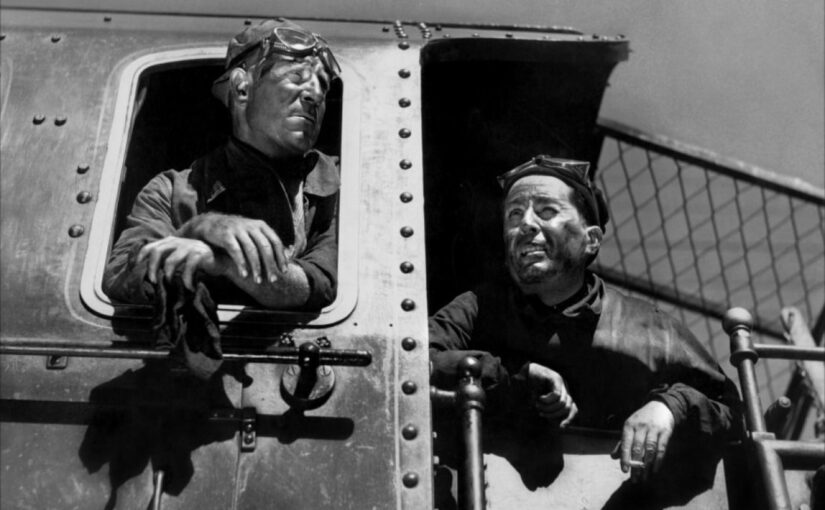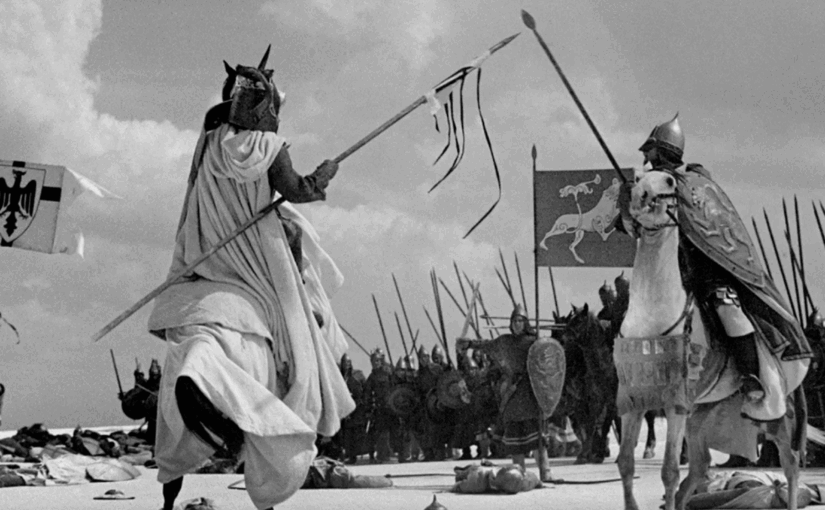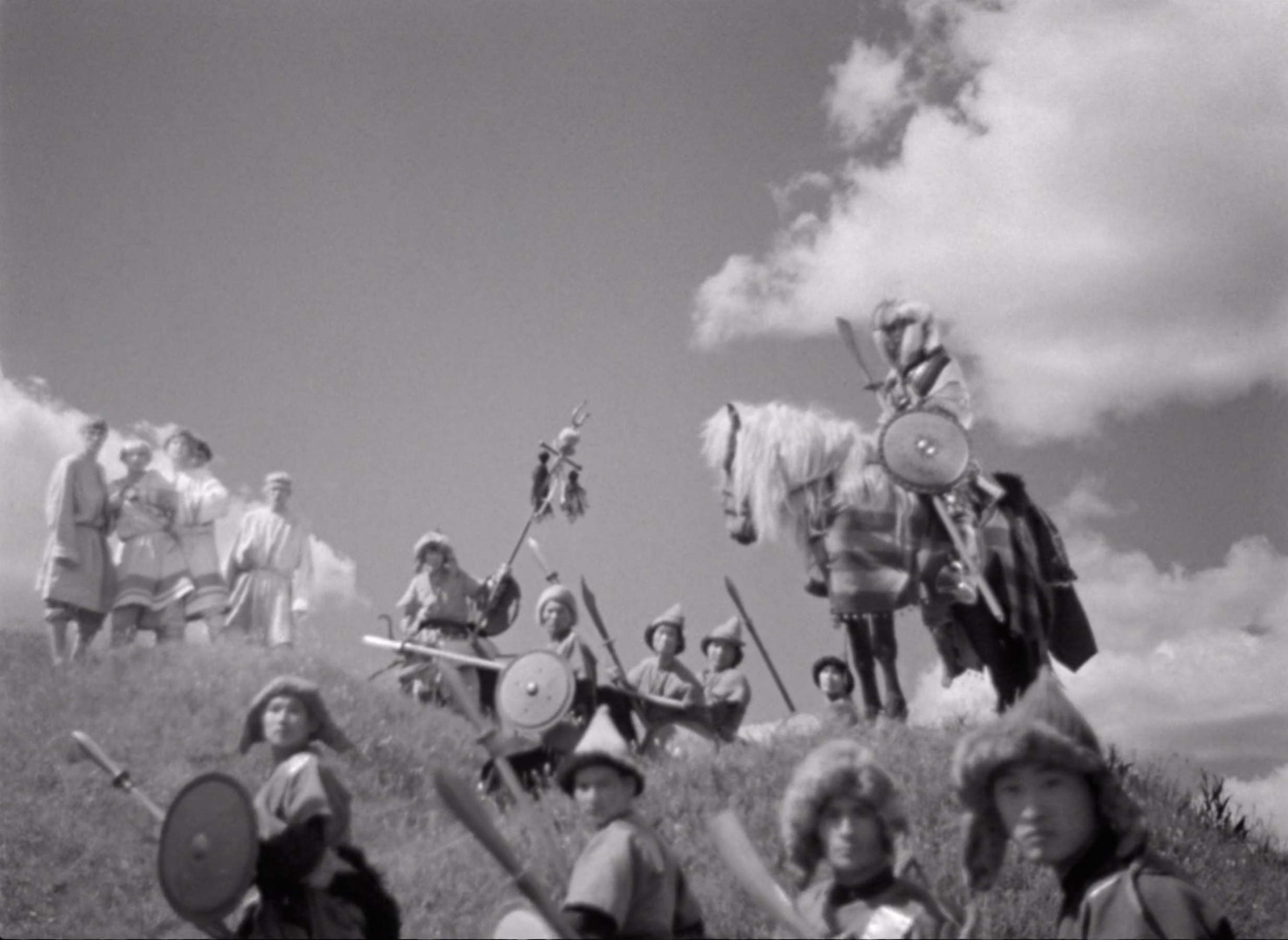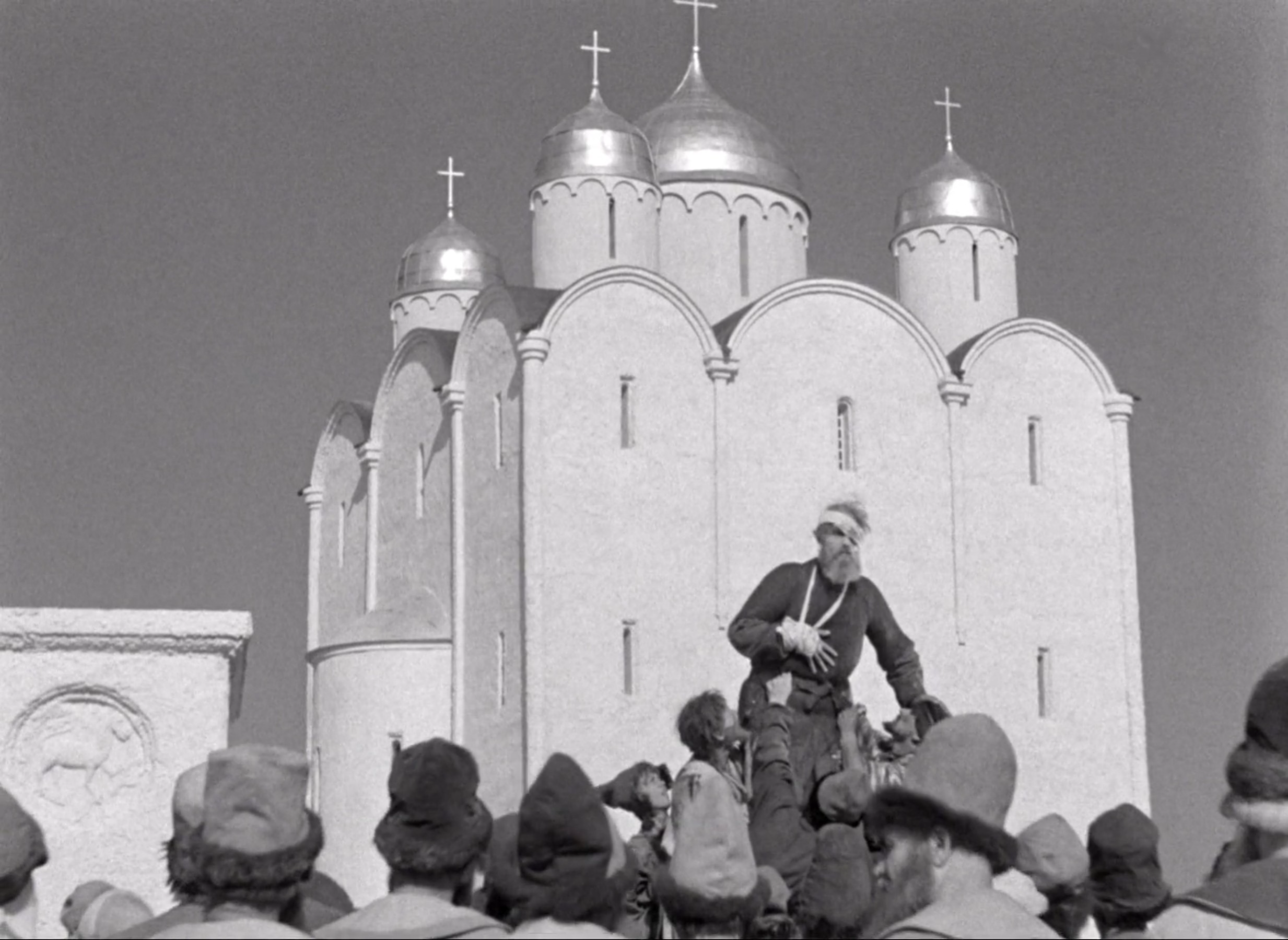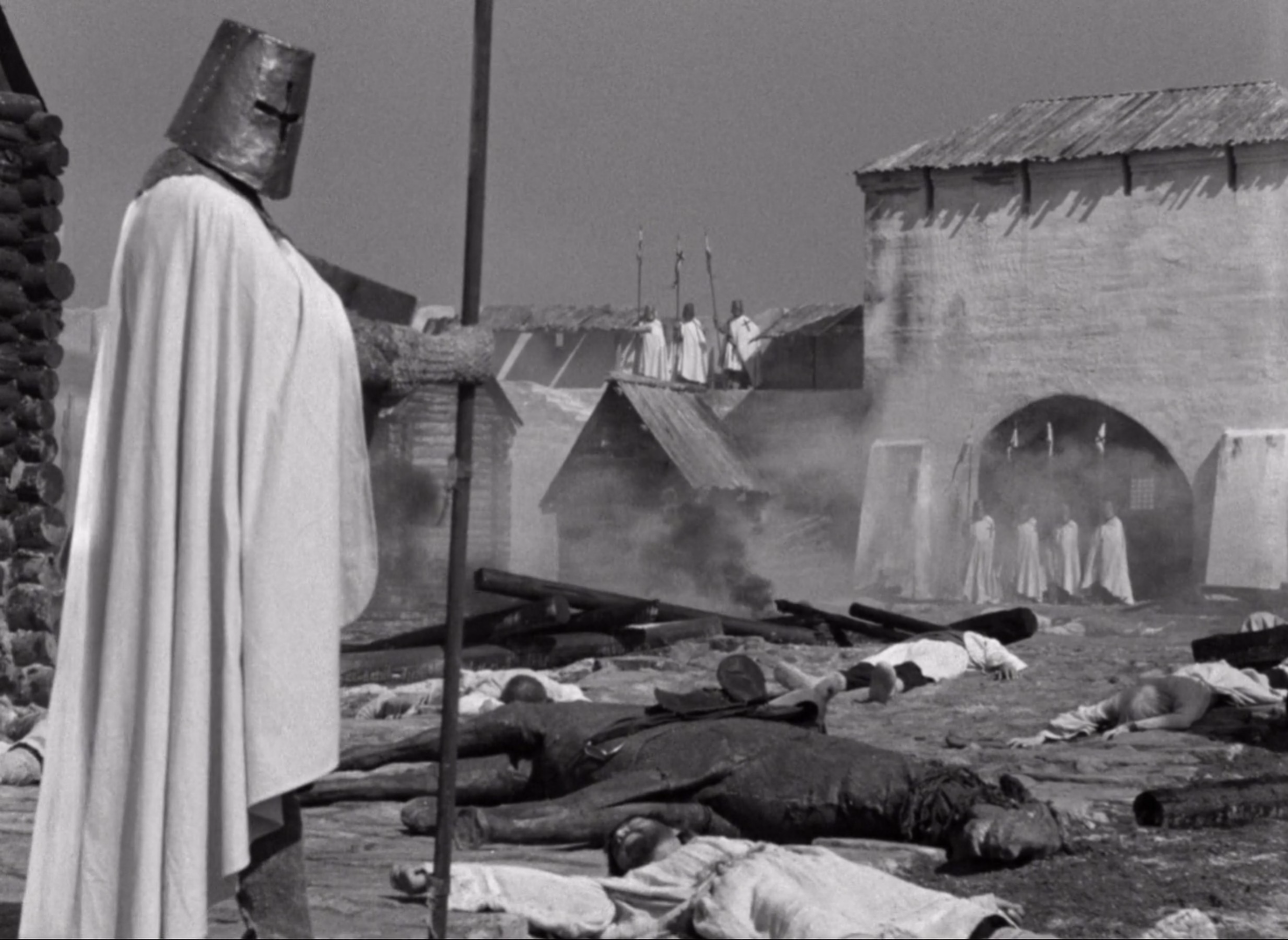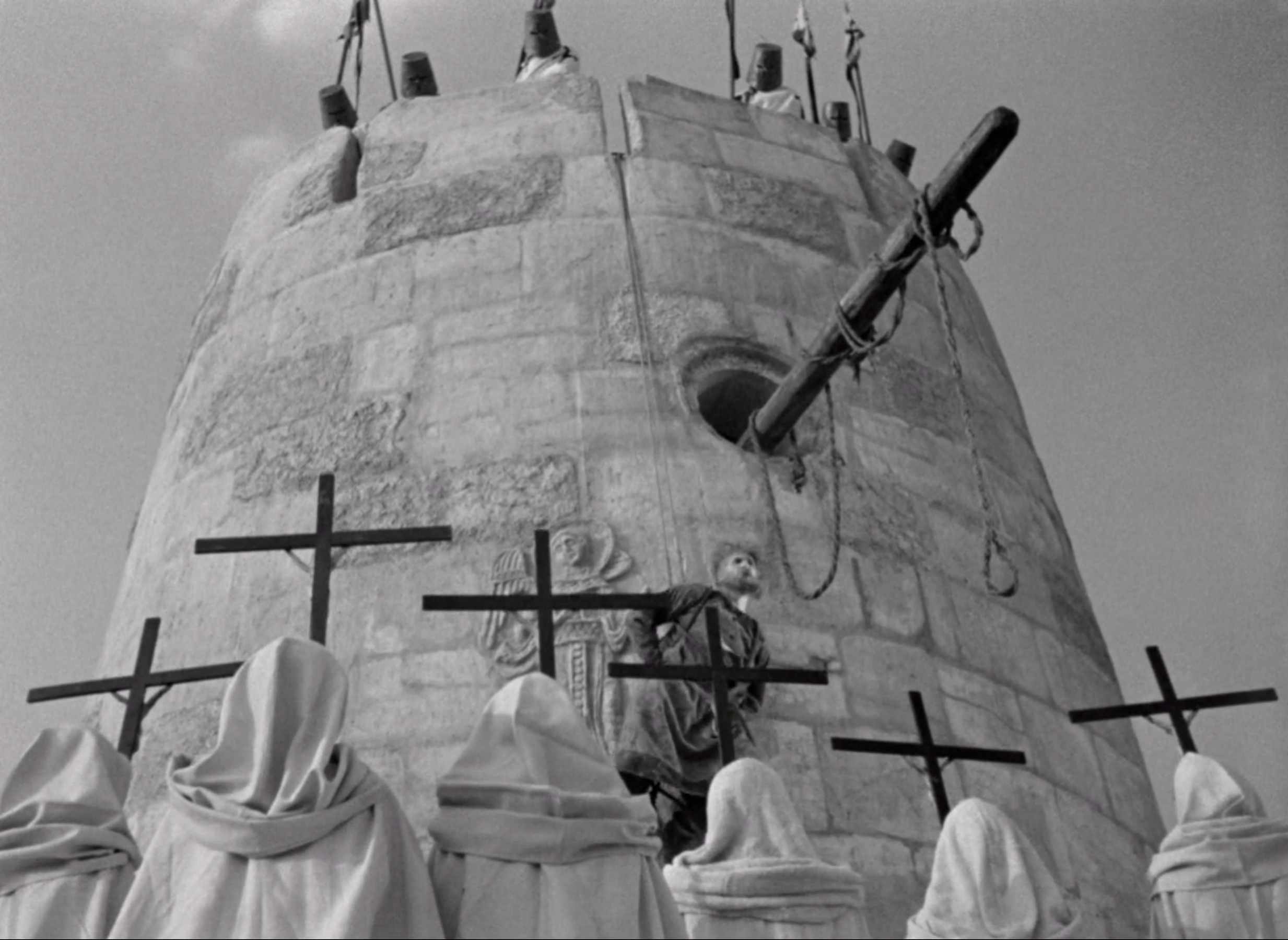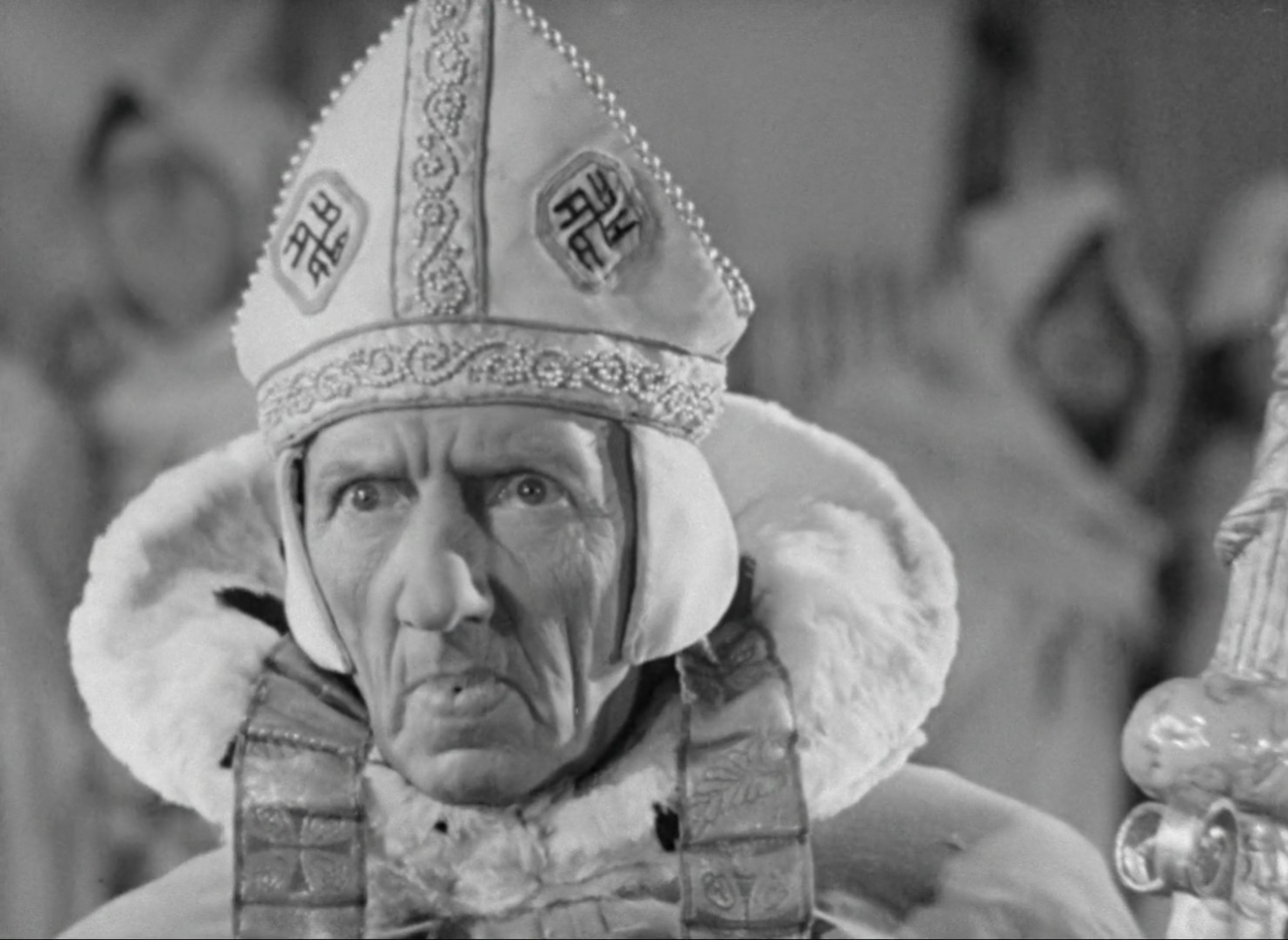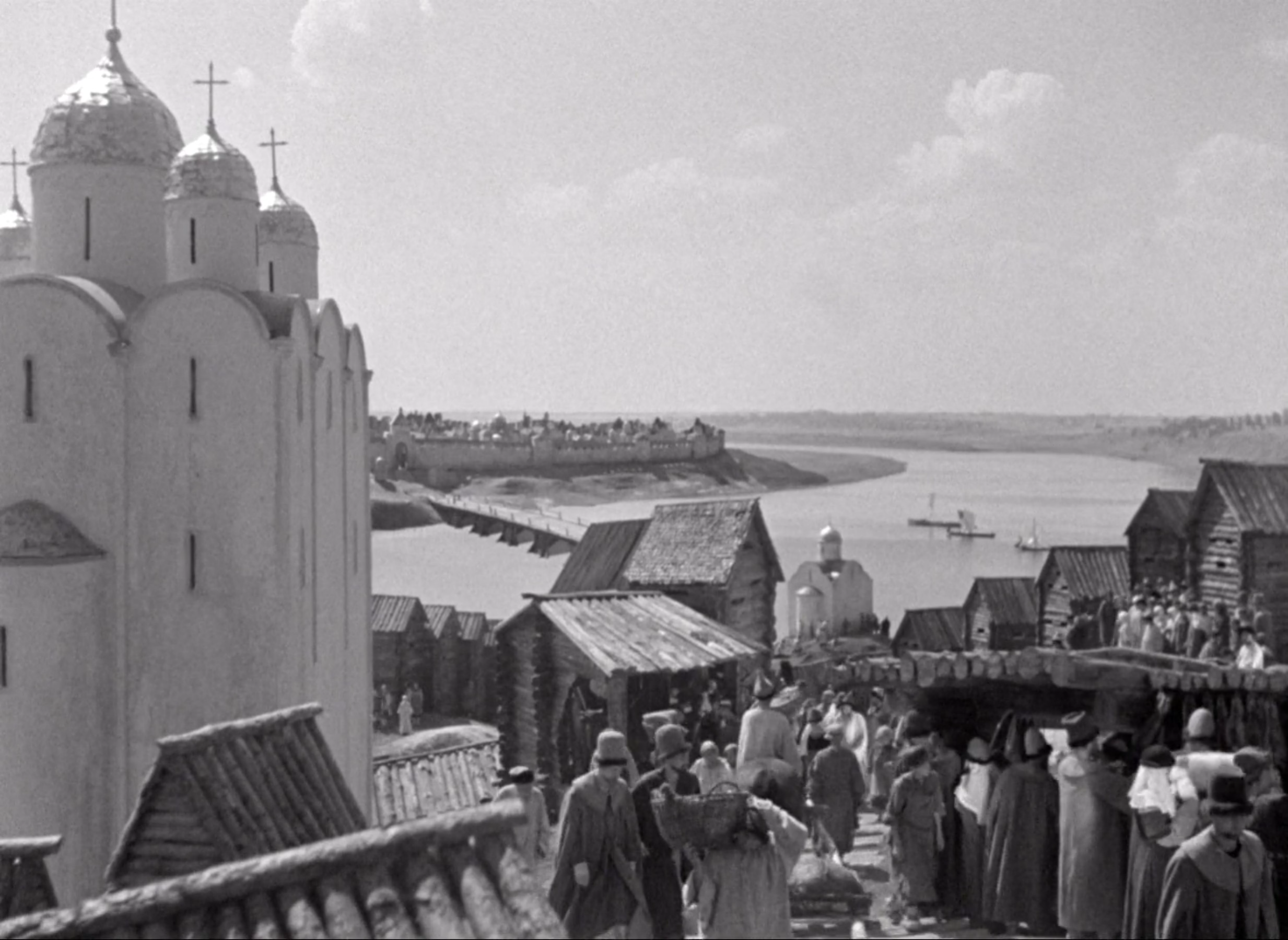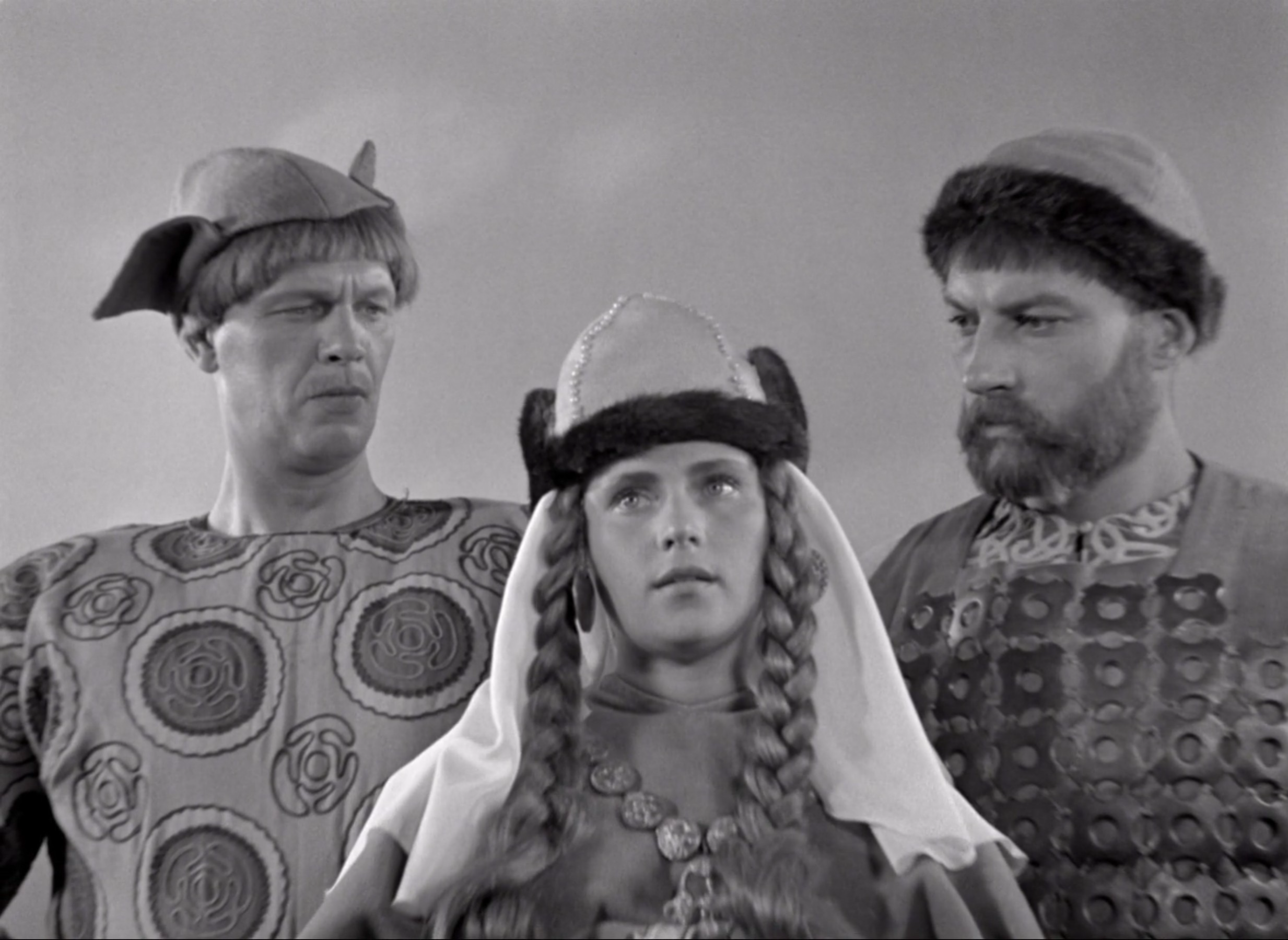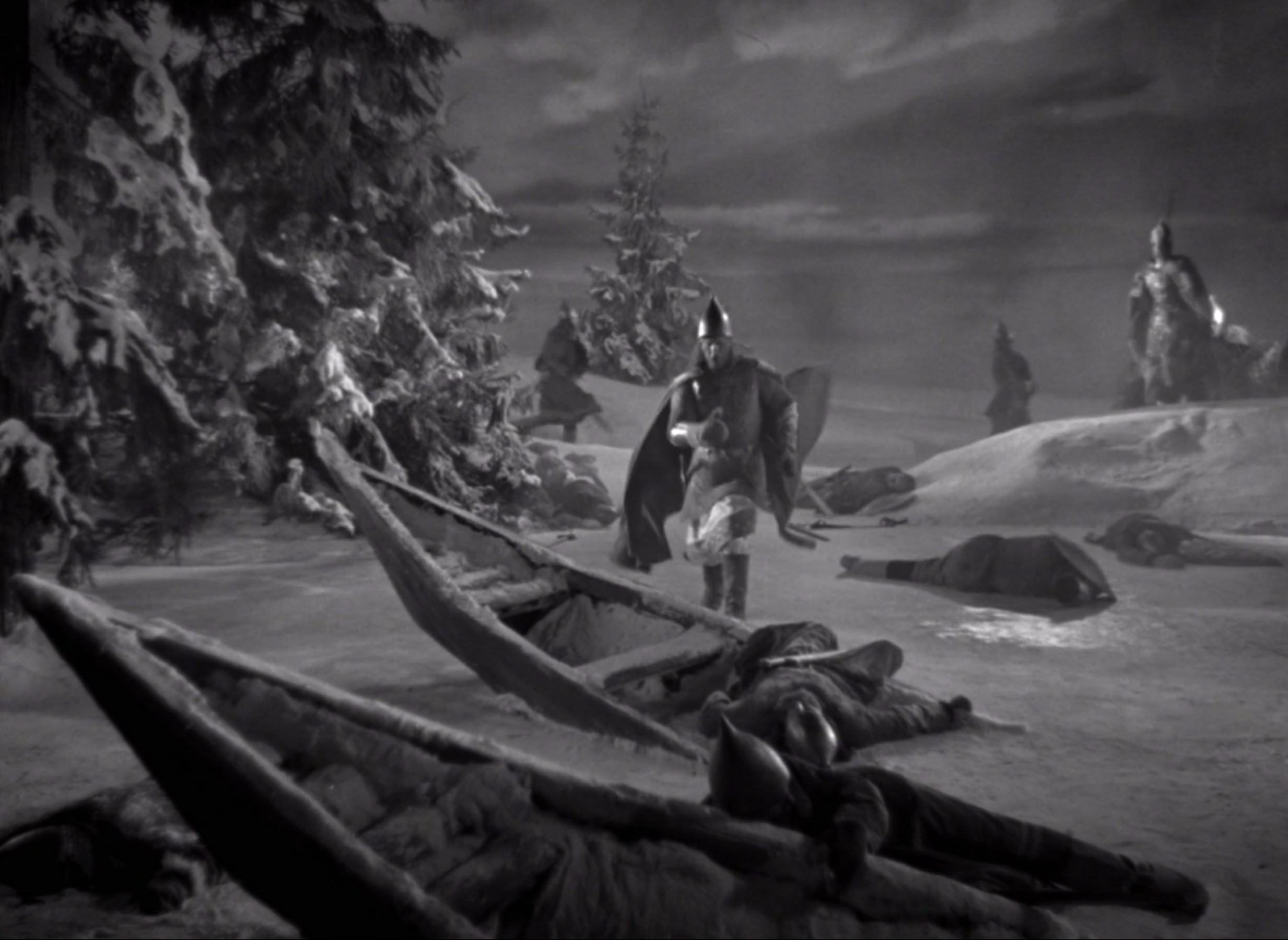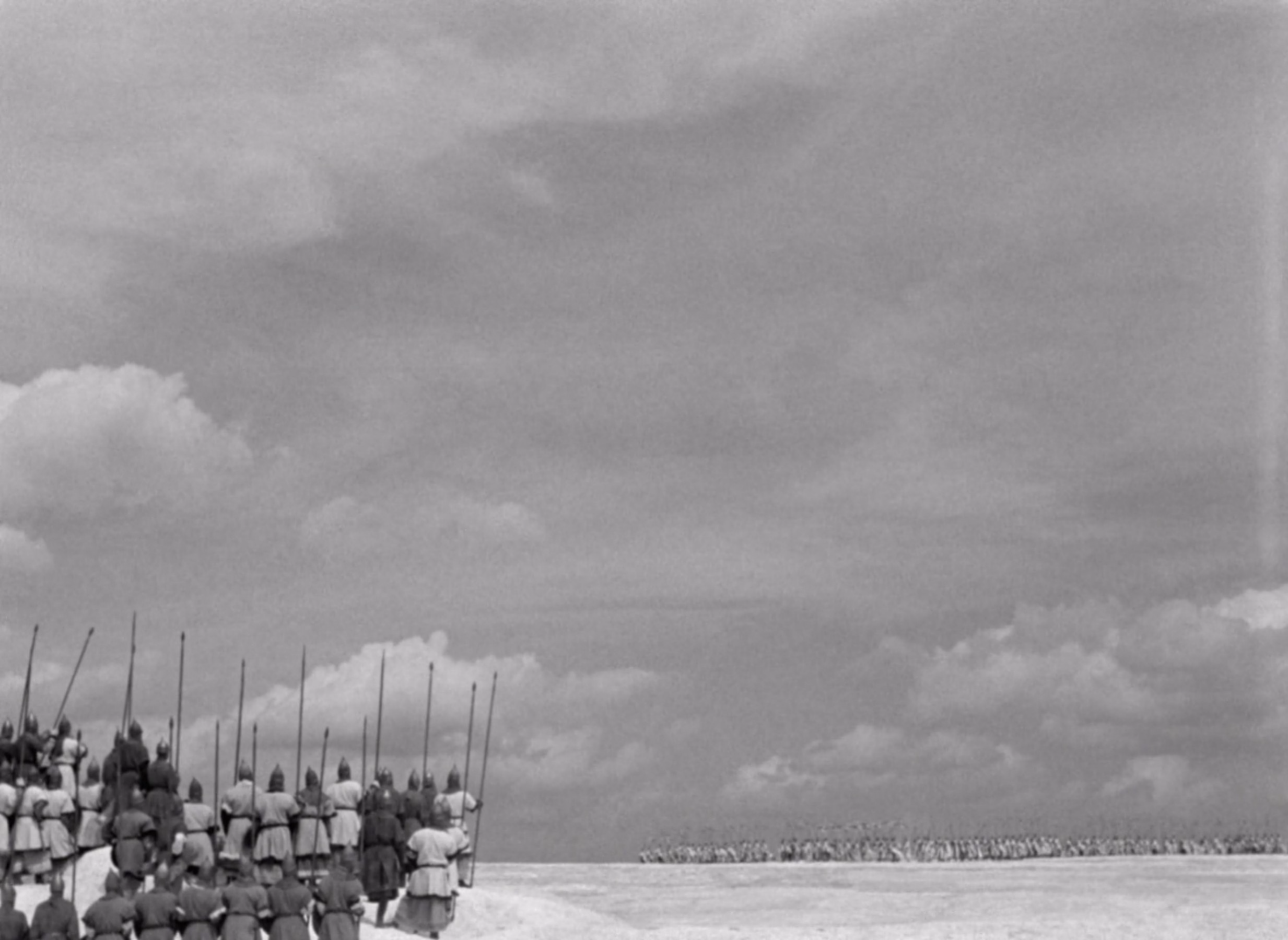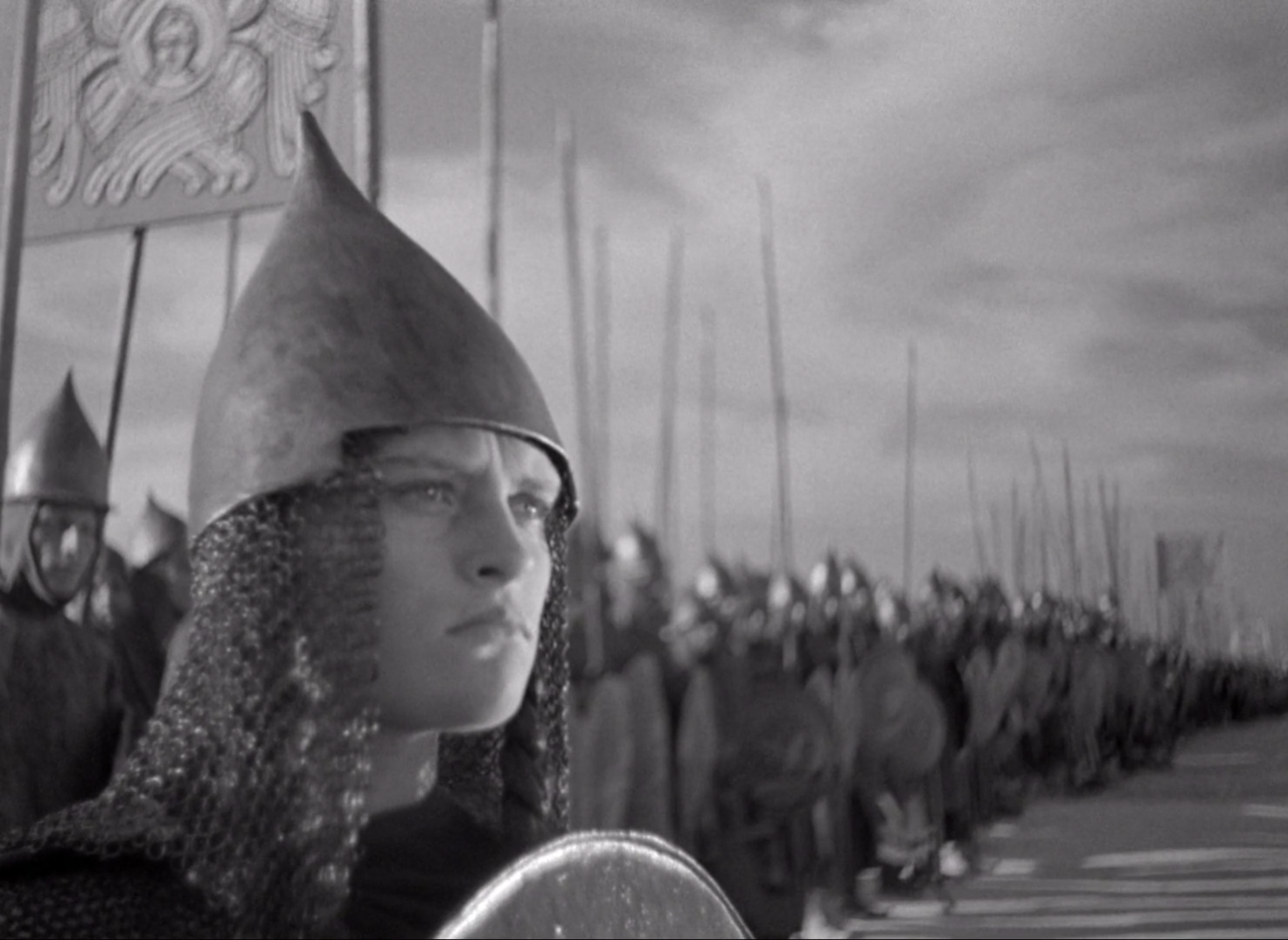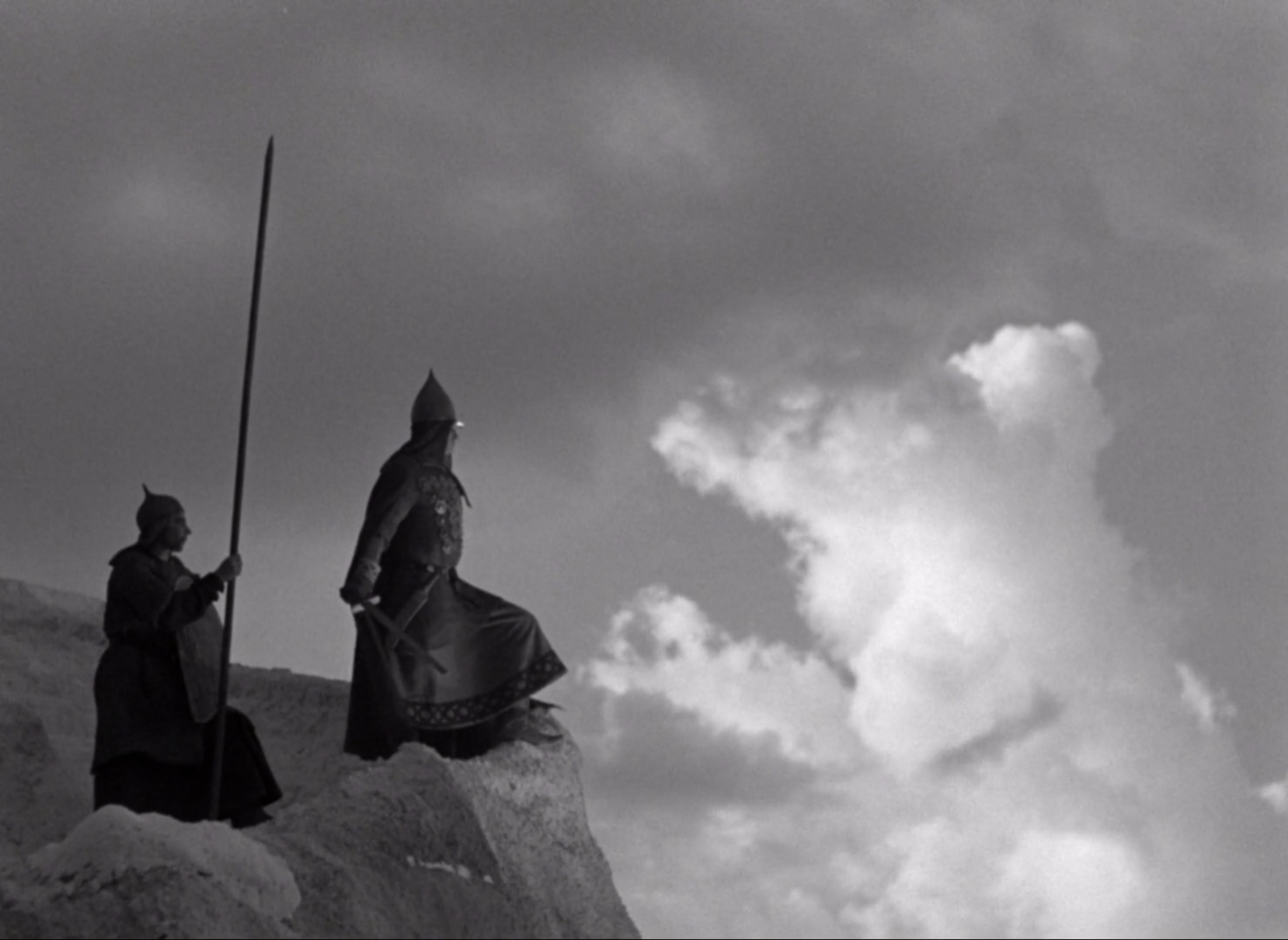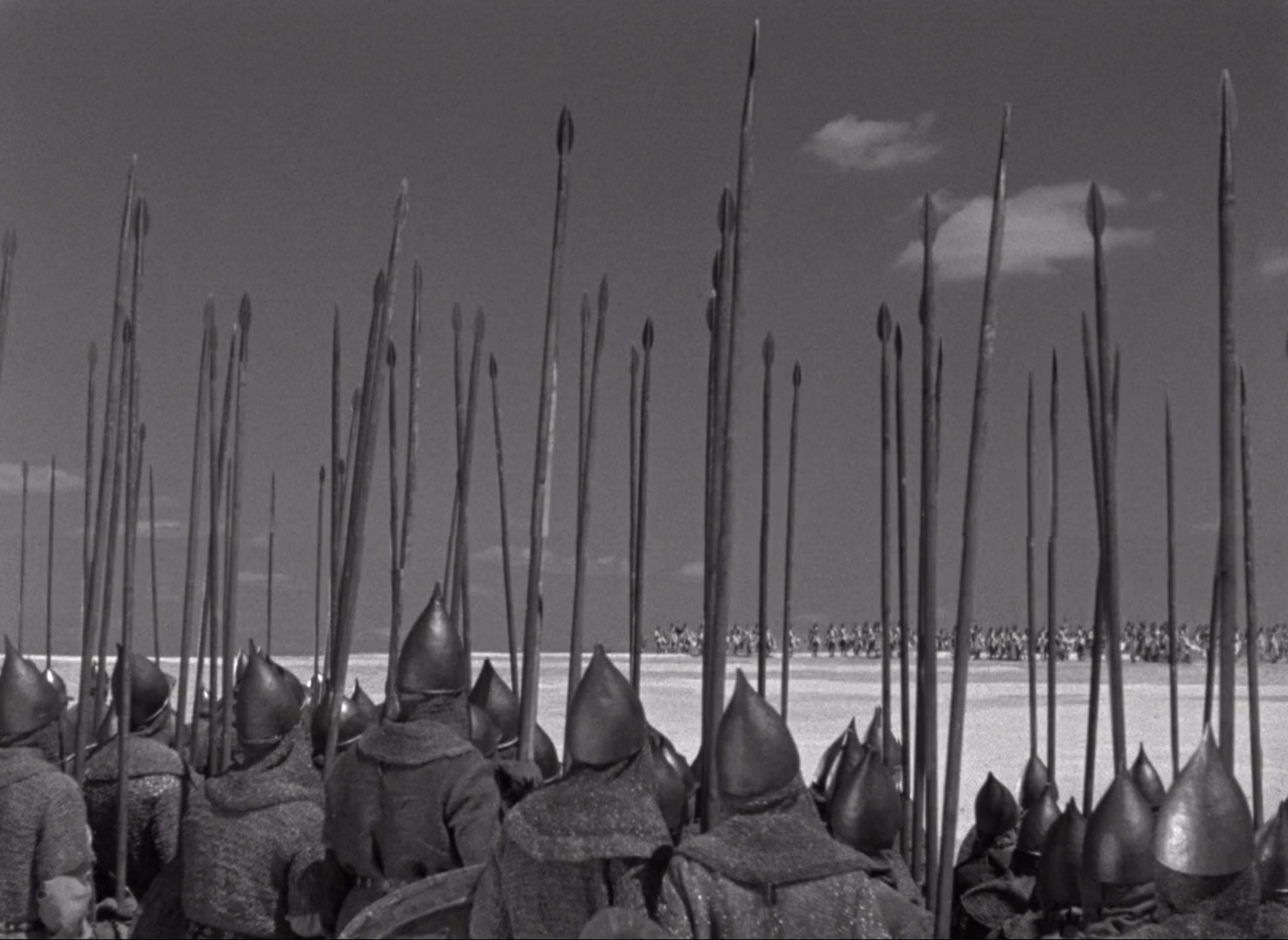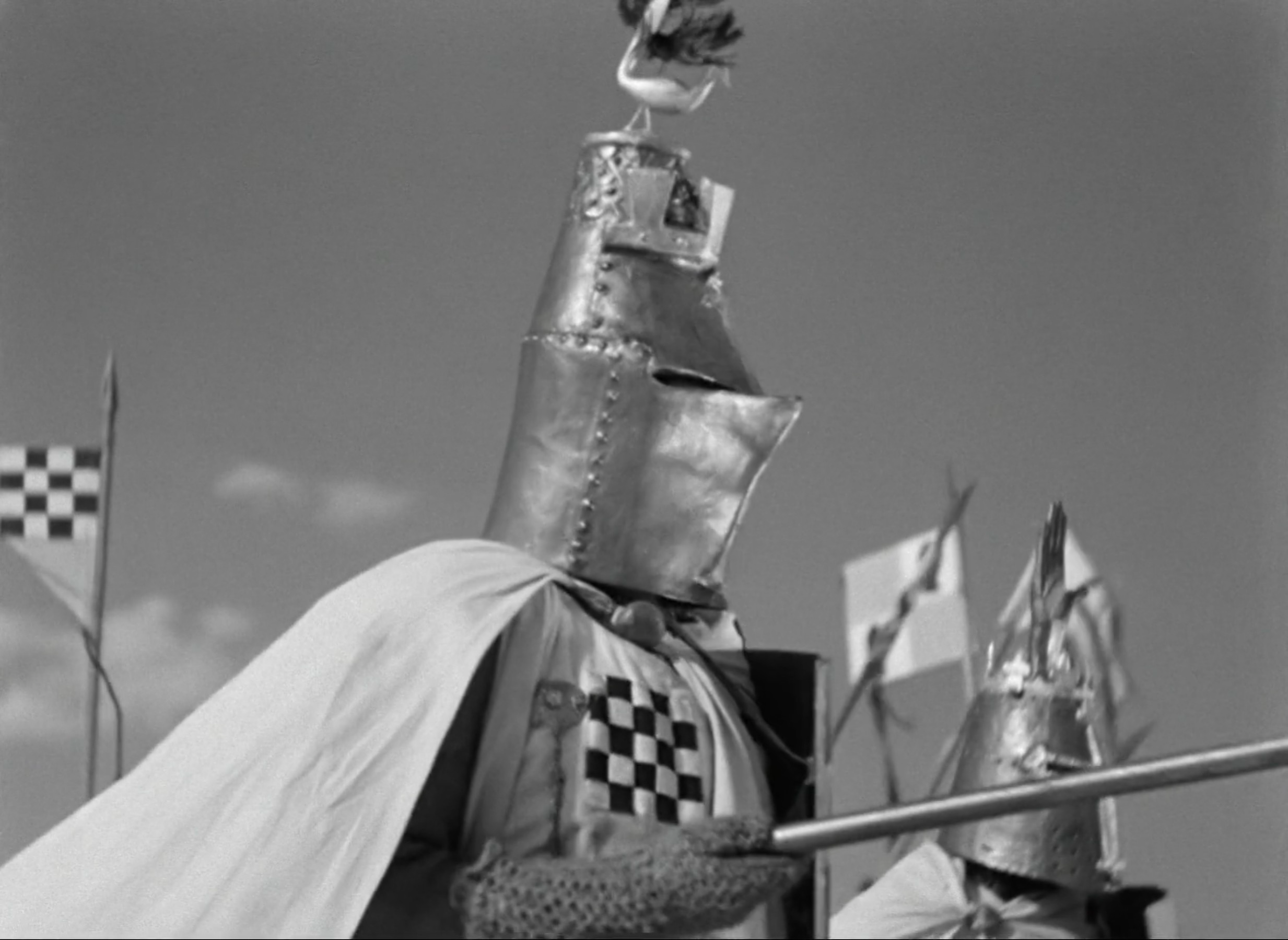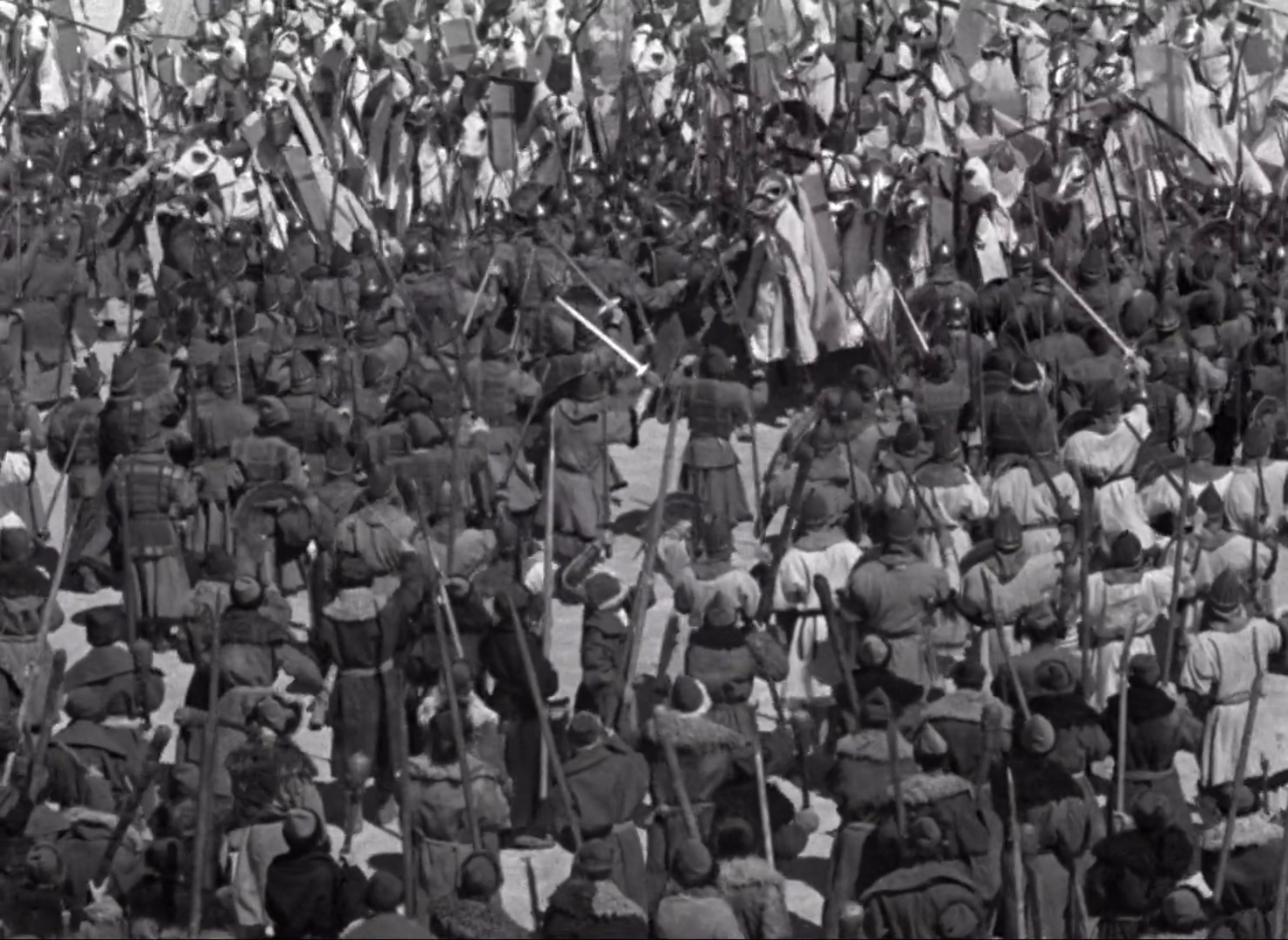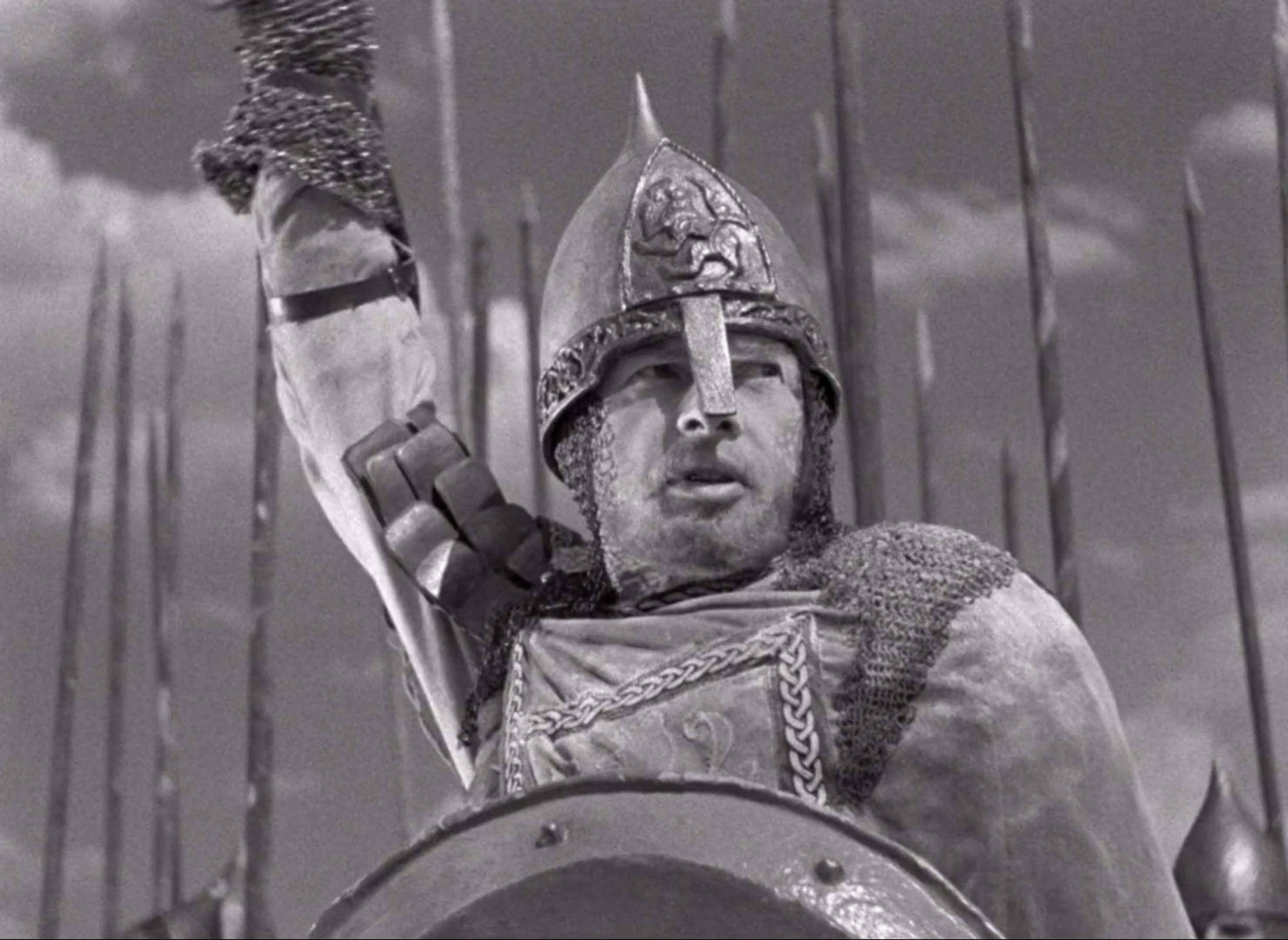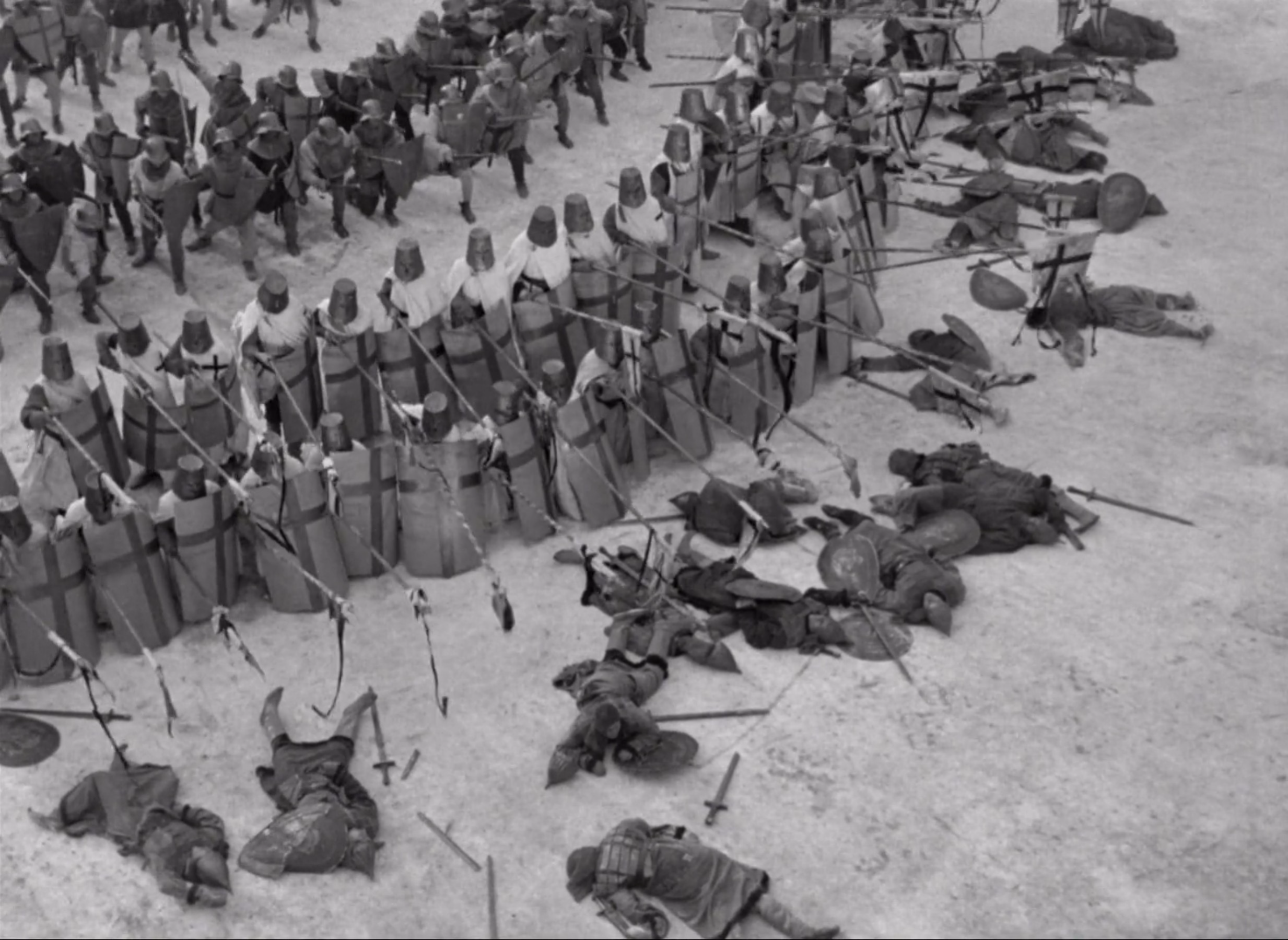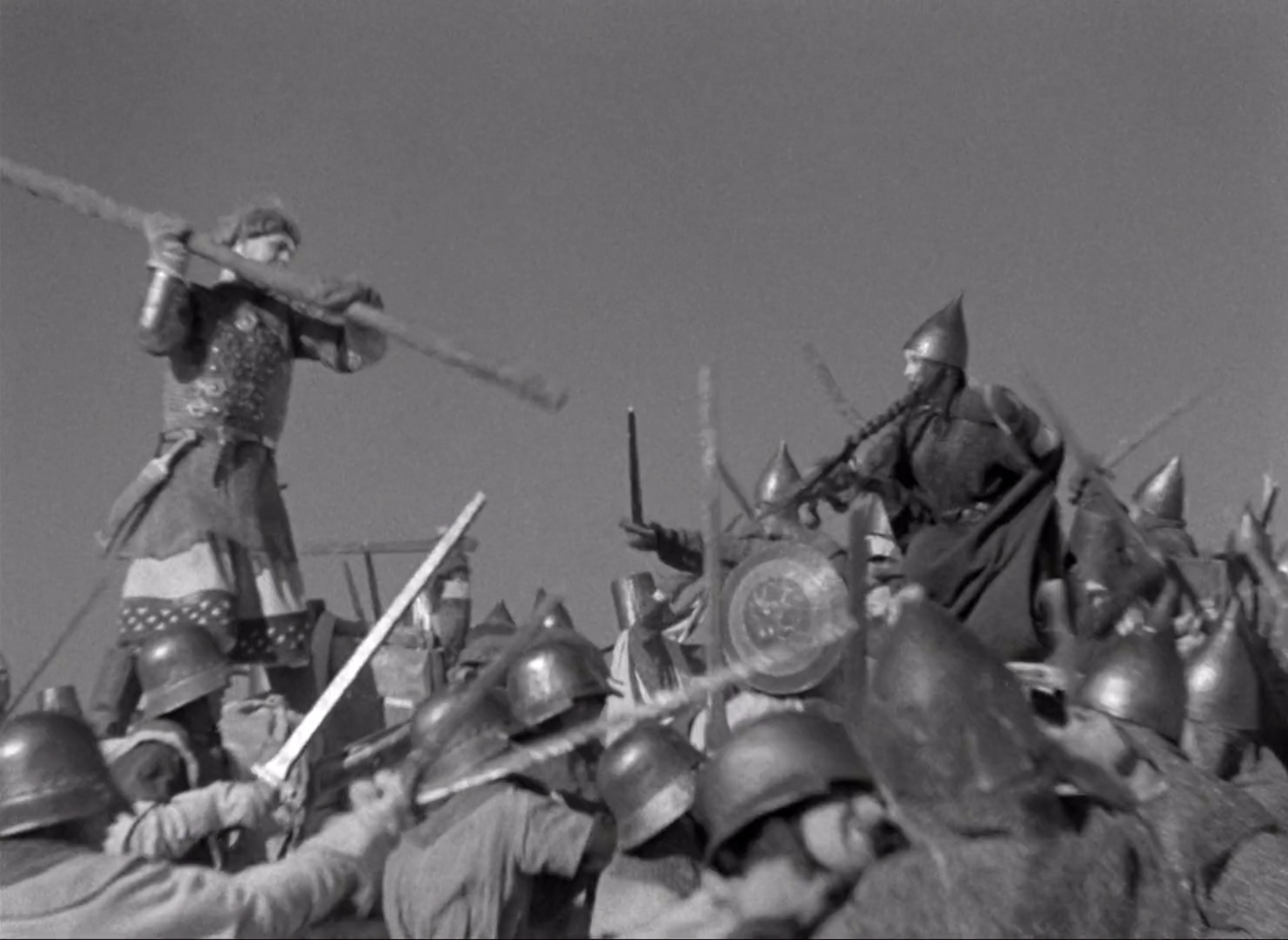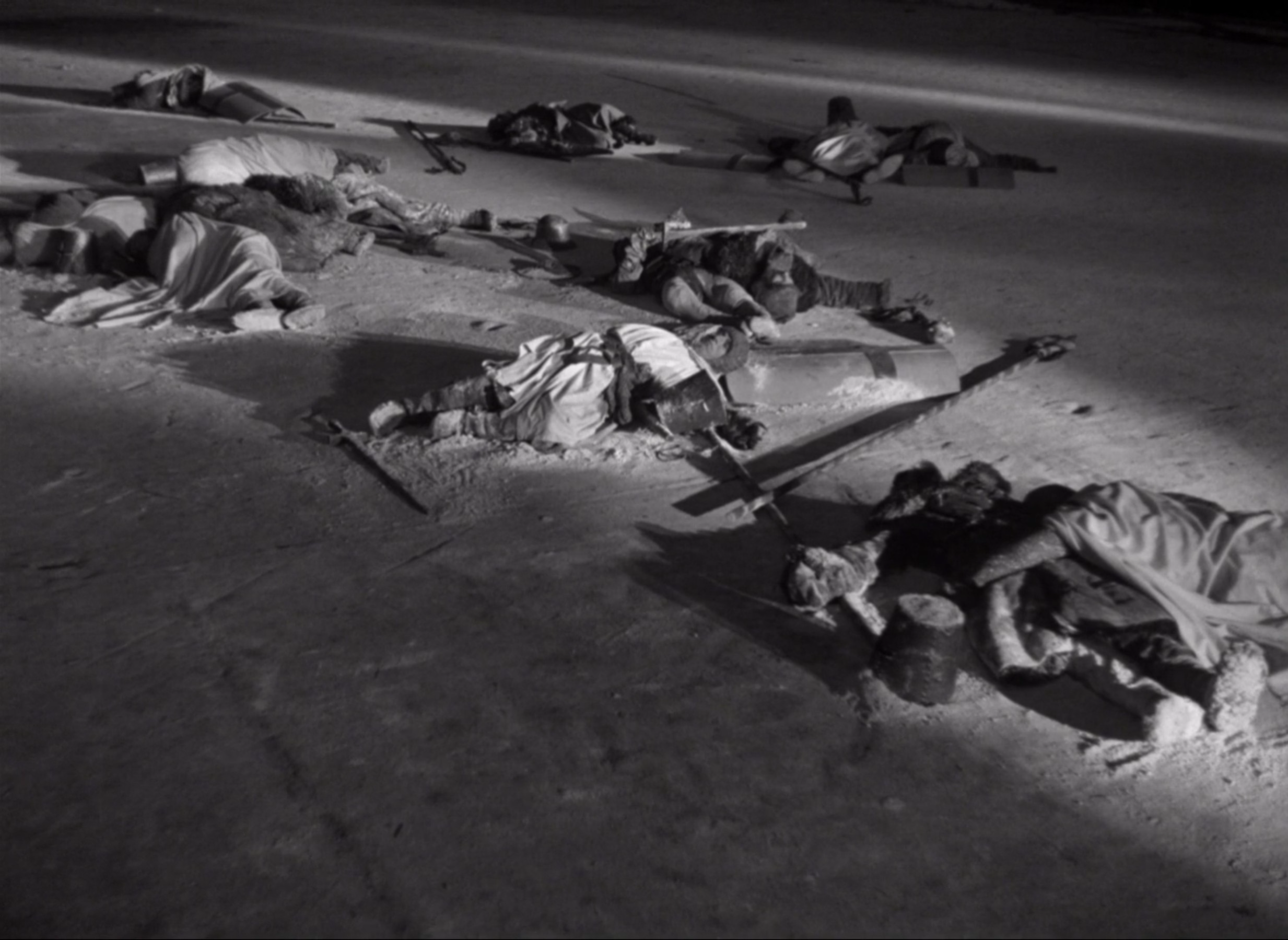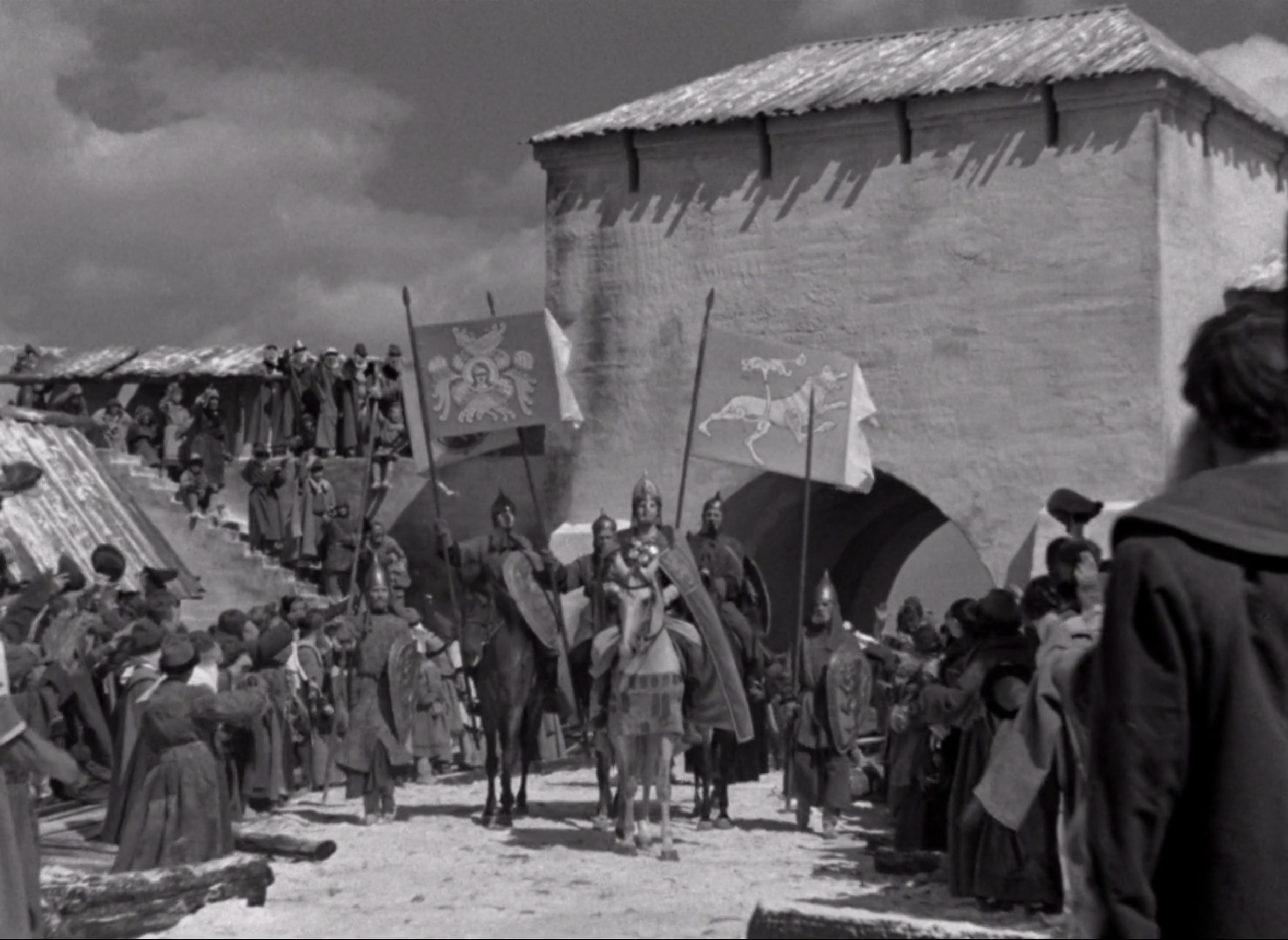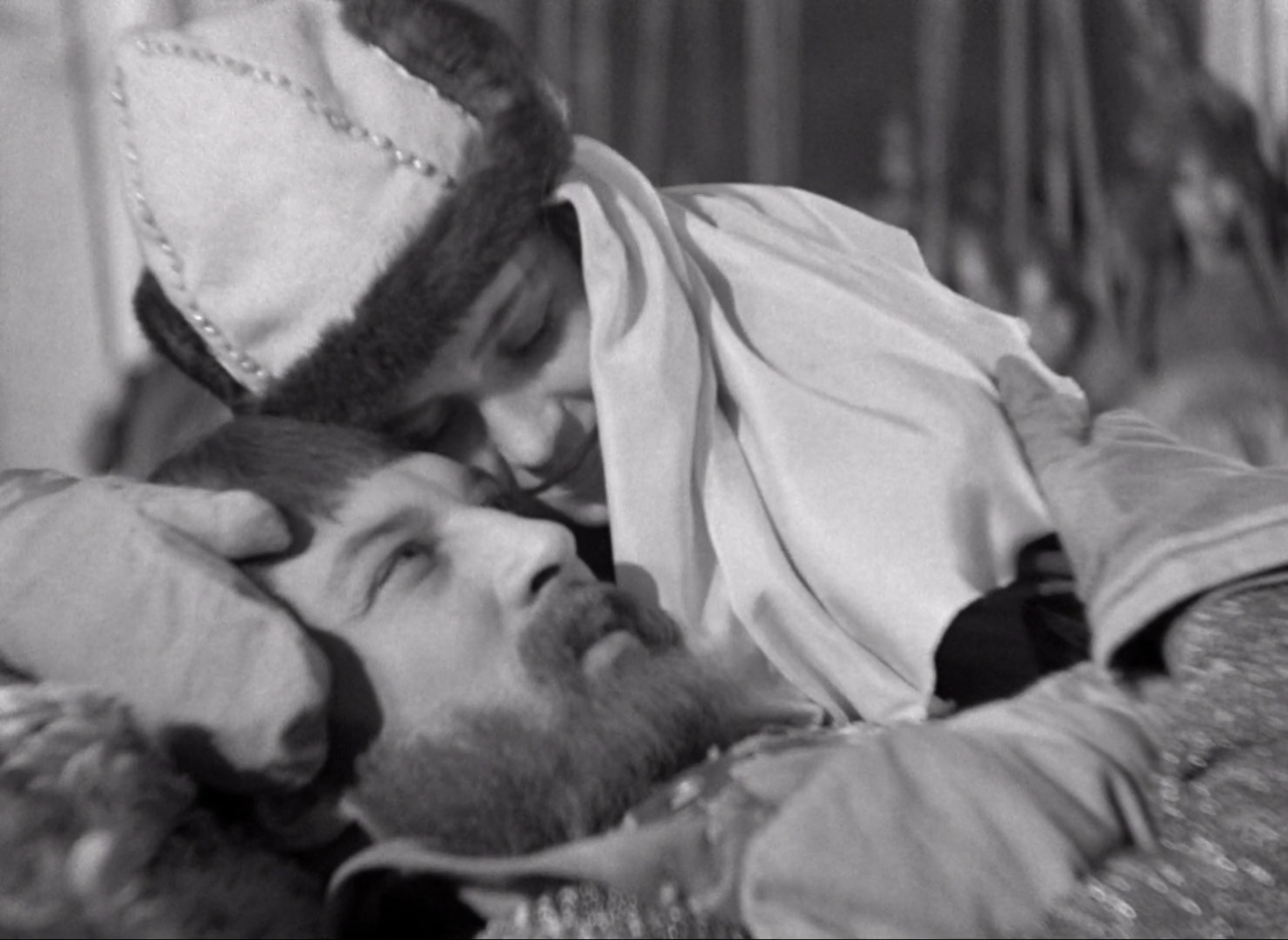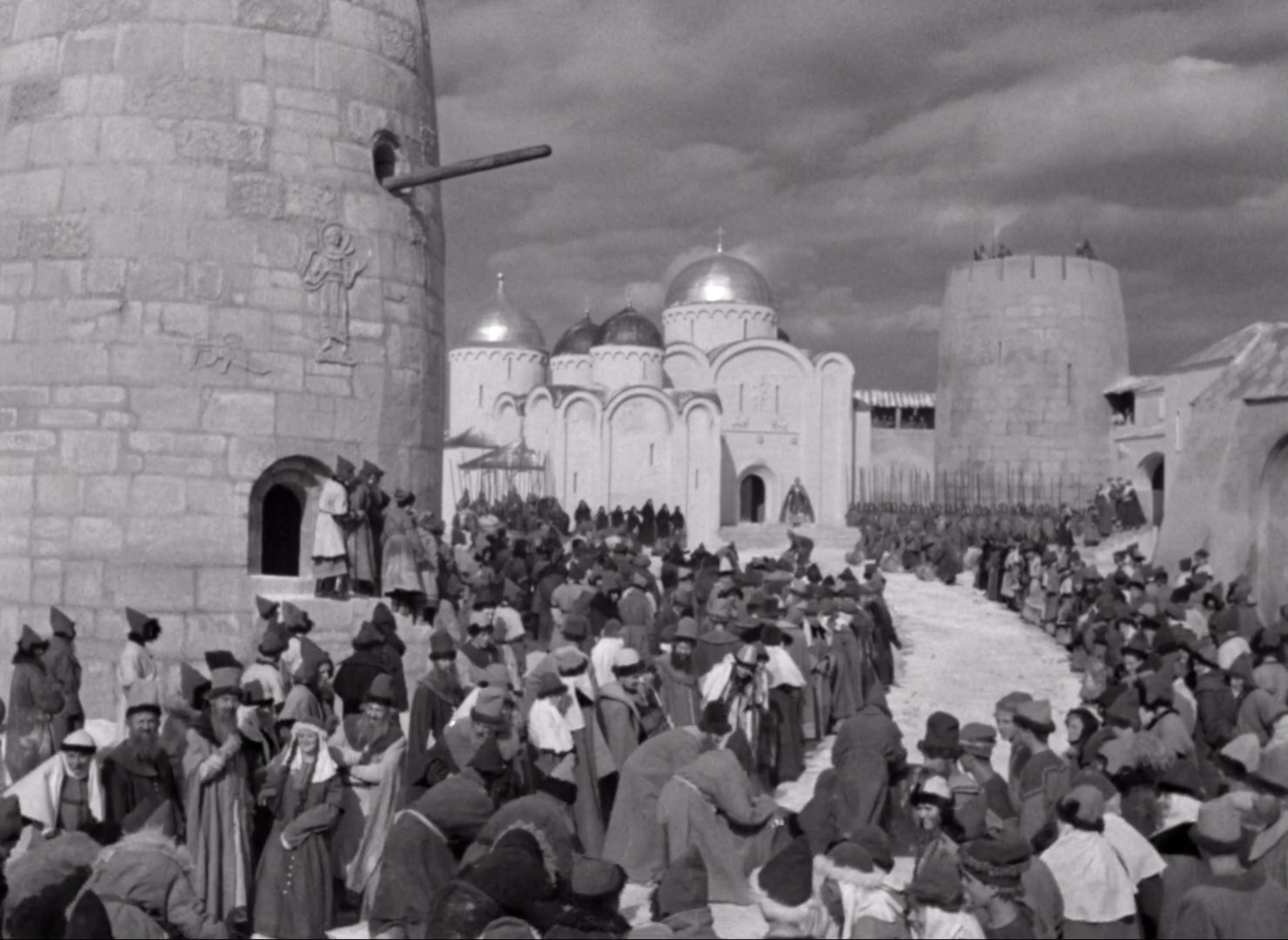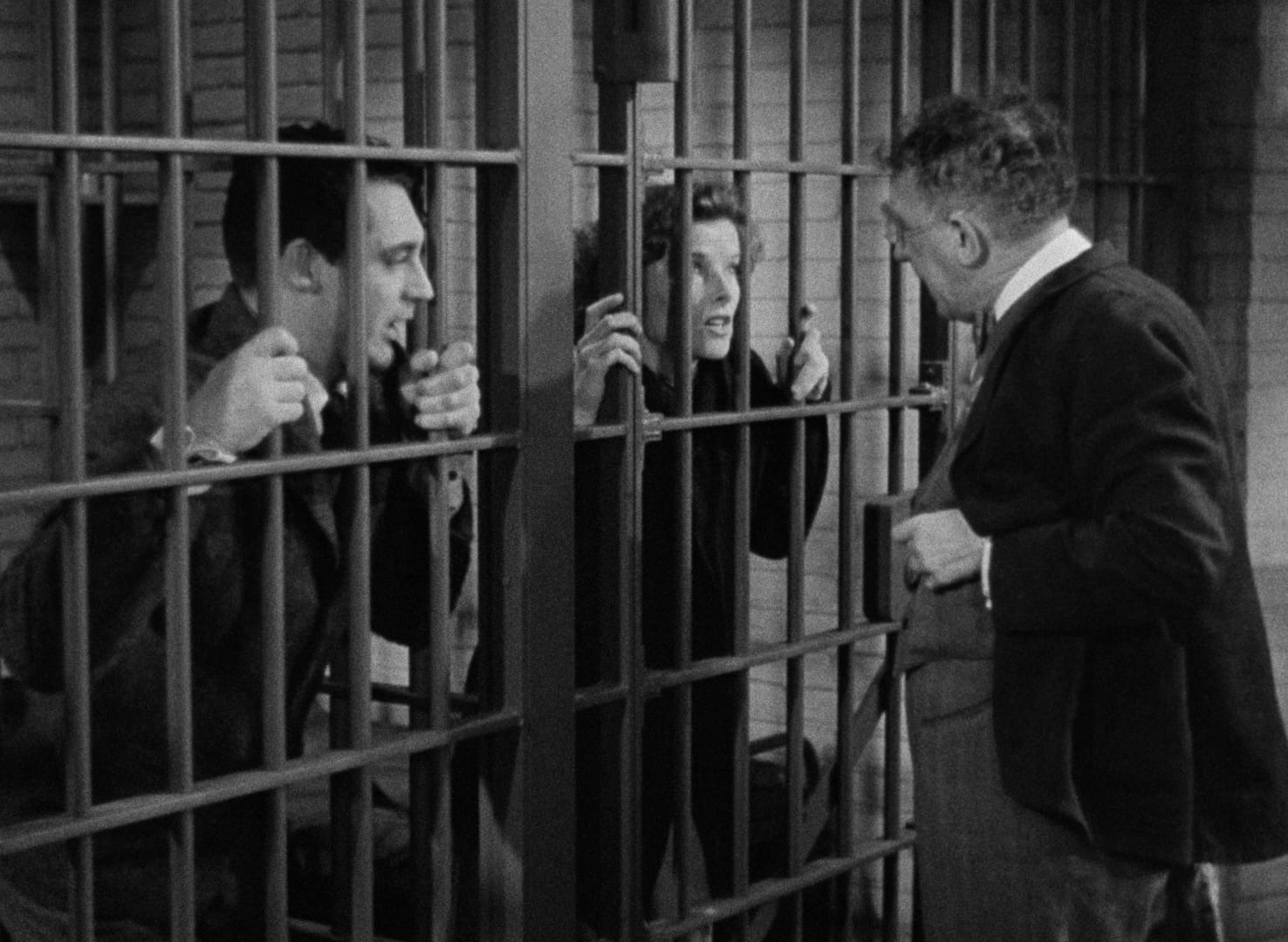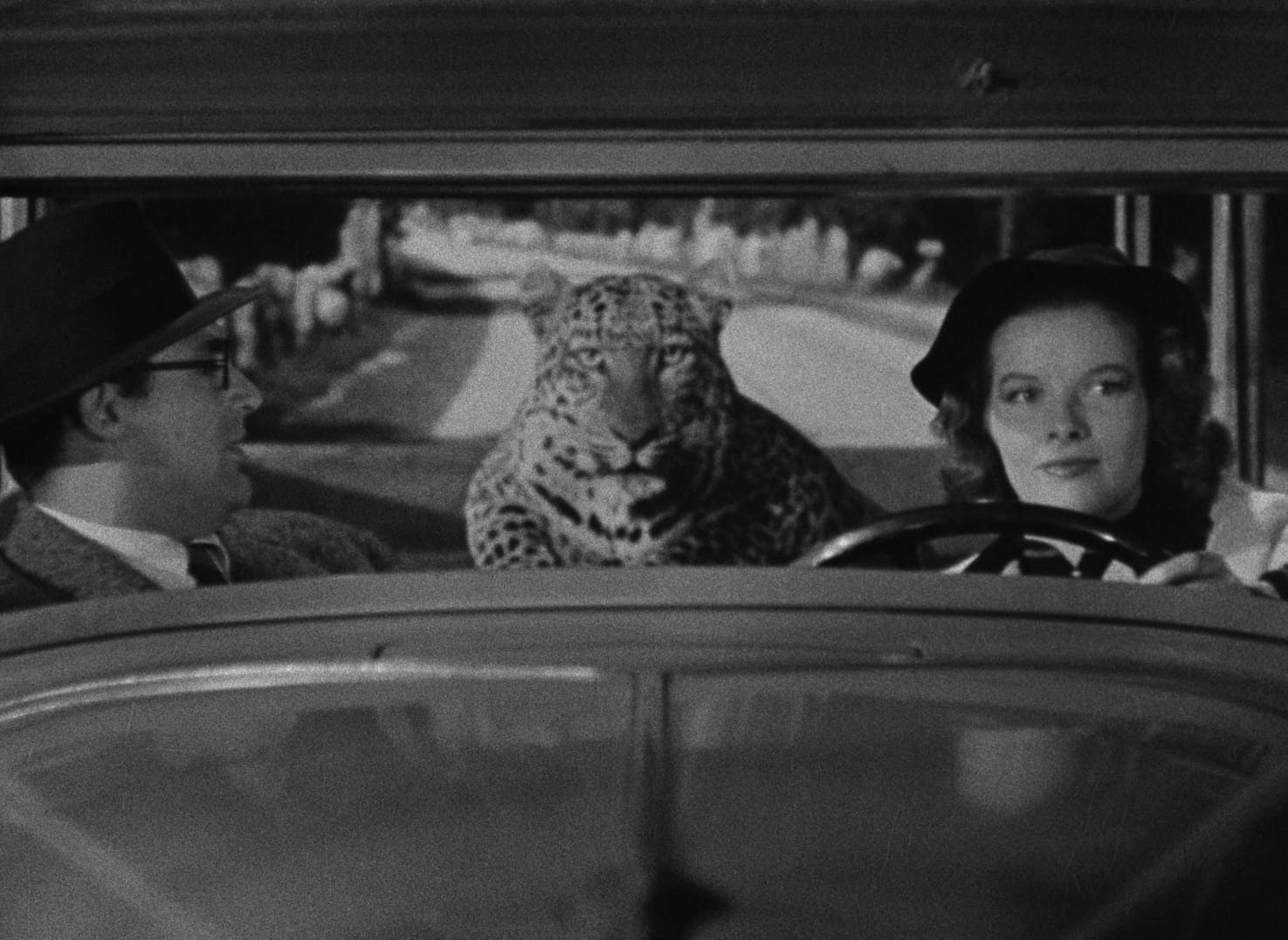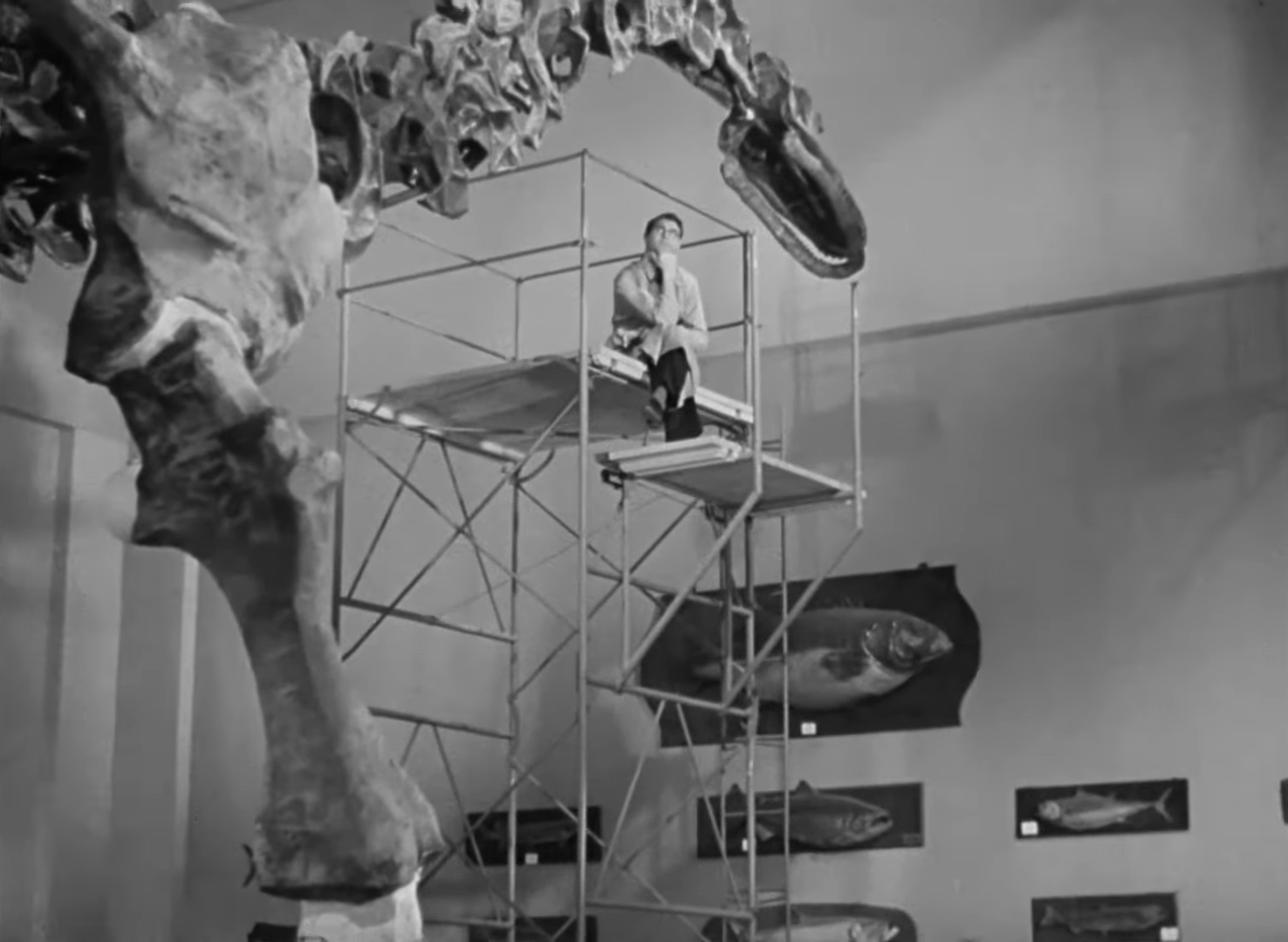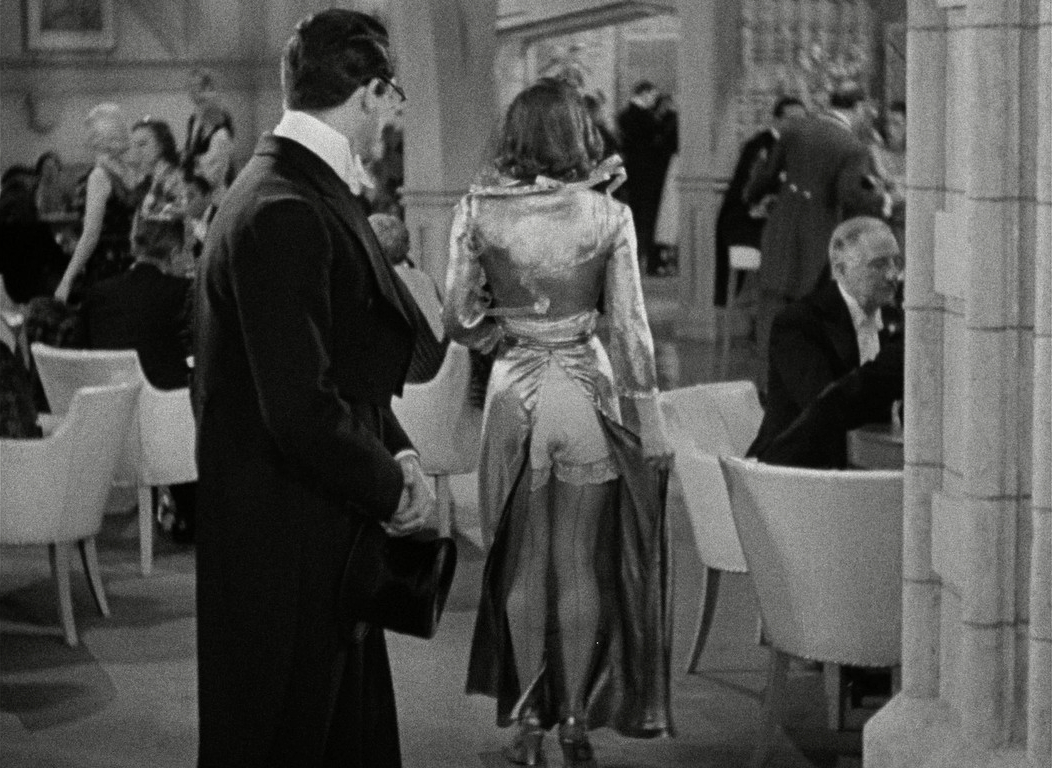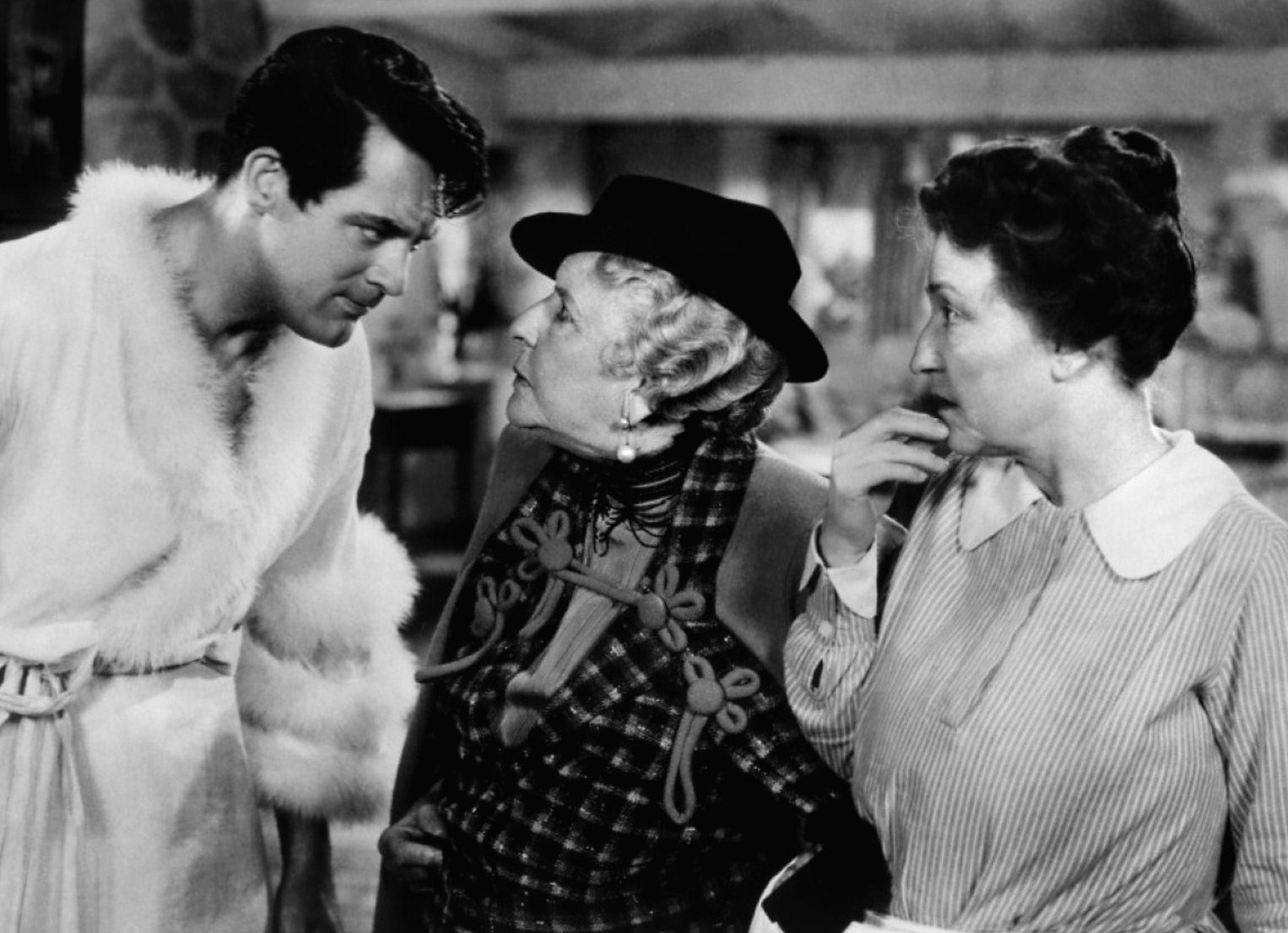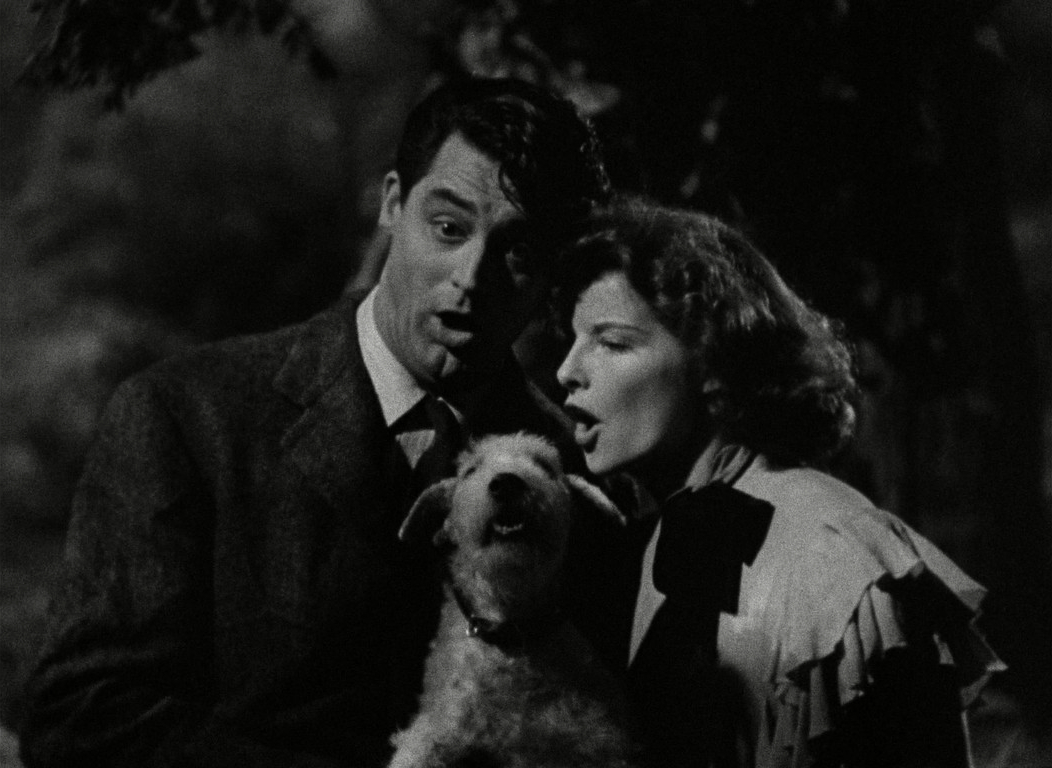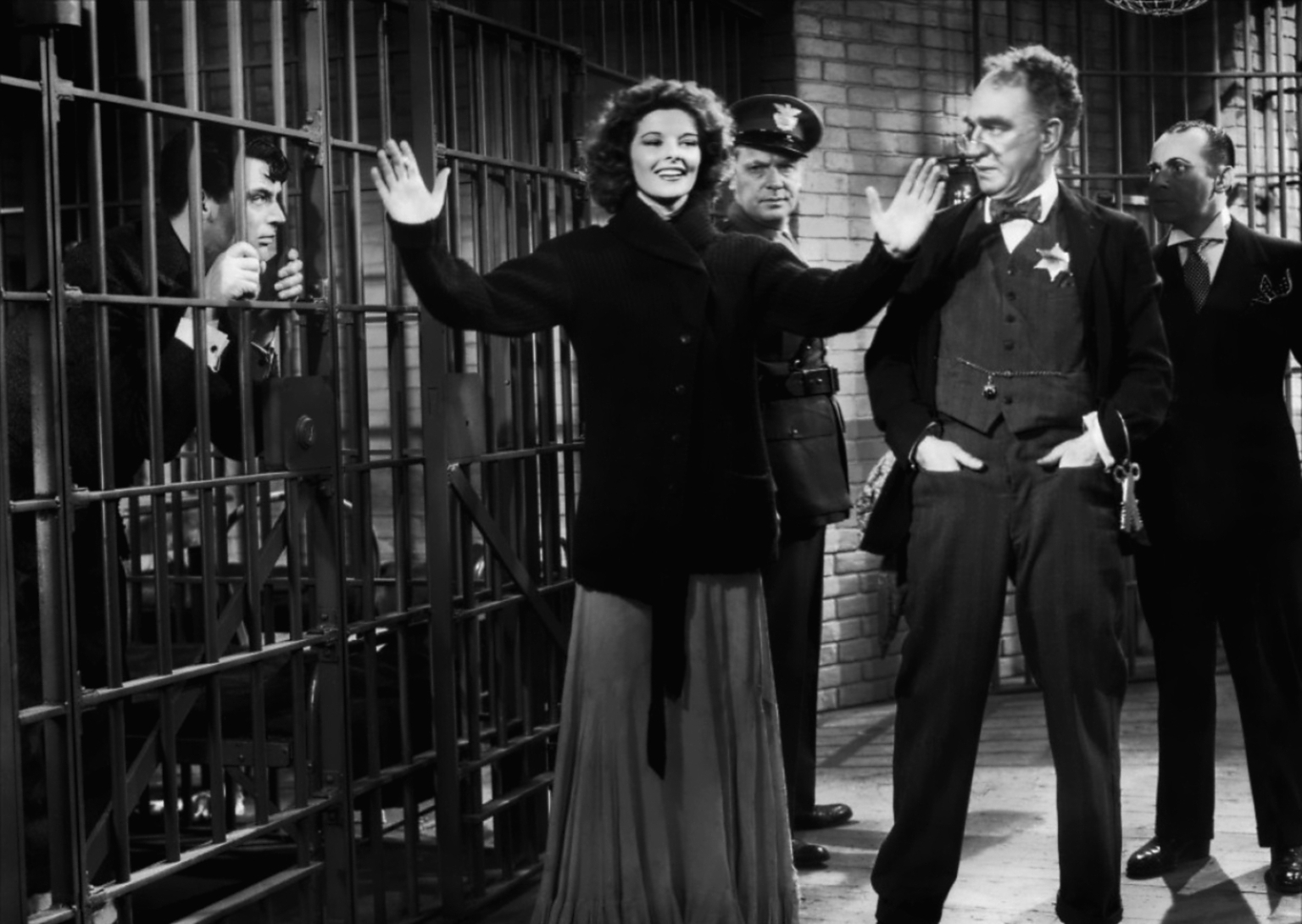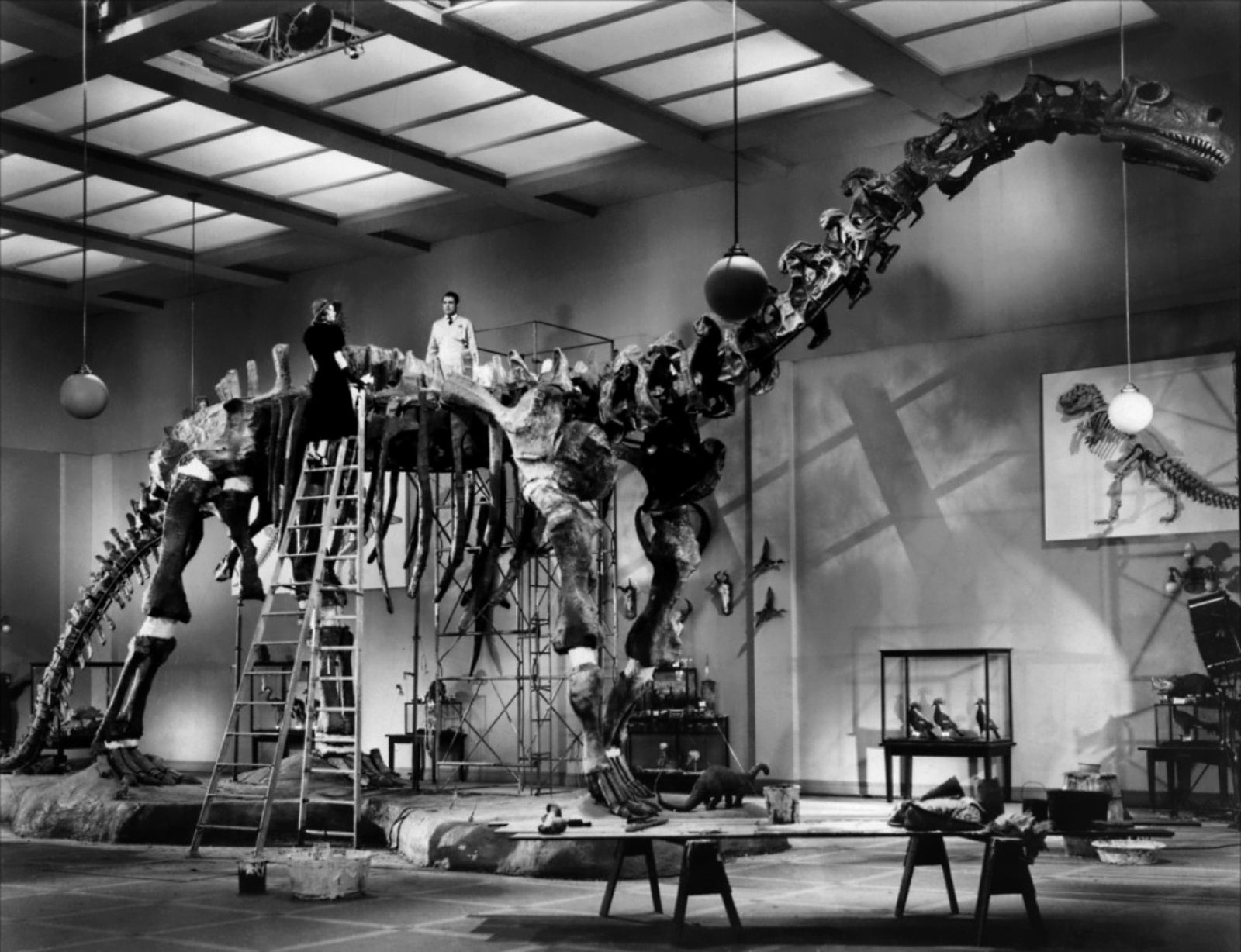Jean Renoir | 1hr 40min

Locomotive driver Lantier has been painfully afflicted by the consequences of his ancestors’ alcoholism since birth, though the way it manifests as headaches and uncontrollable fits of rage in La Bête Humaine, it might as well be a blood curse. When he is caught in the throes of passion or intoxication, he appears to be possessed by some invisible force, at one point compelling him to wrap his hands around the neck of his sweetheart Flore before a passing train snaps him back to reality. As such, it is a dangerous game that his newest love interest Séverine is playing, slyly luring the angry, volatile beast from out of its cage and setting it on her abusive husband.
The link between France’s poetic realism and Hollywood’s films noir is evident in Jean Renoir’s bleak, psychological tale, laying out the blueprints of those corrupted antiheroes and femme fatales who would dominate the next decade of American cinema. That La Bête Humaine’s roots extend back to the naturalistic writing of novelist Émile Zola only further embeds it within a history of fatalistic storytelling as well, rejecting romanticism in favour of moral ambiguity and melancholic contemplations on the inexorable nature of man. After all, Lantier’s downfall is woven into the very fabric of his character, dooming him to a tragic fate decided before he was even born – so who better to navigate his dance with darkness than the French master of camera movement?
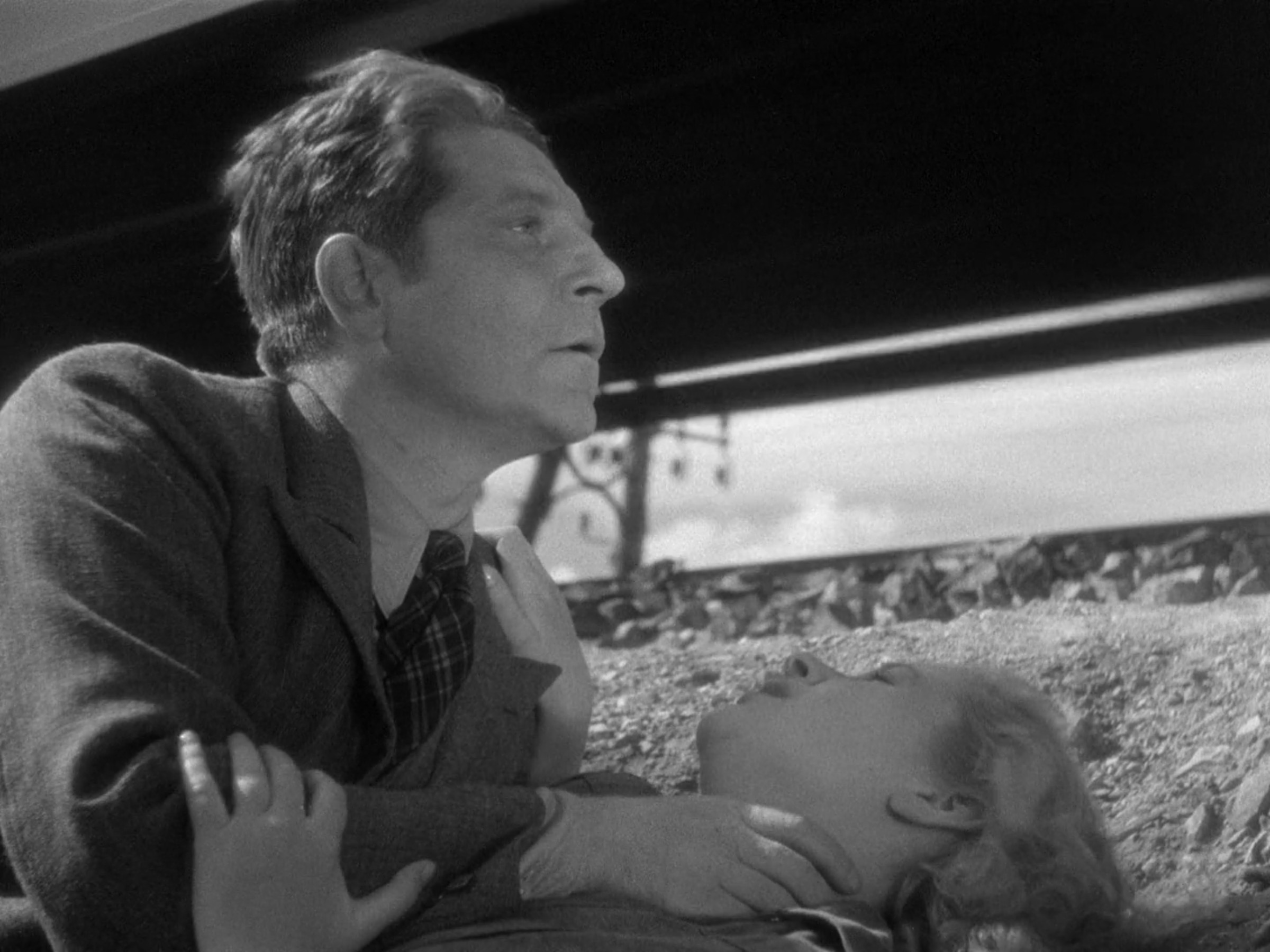

Coming off a string of cinematic triumphs, the versatility of Renoir’s fluid visual style was well-established in 1938, though here it is more precisely aimed at generating a pervasive, uneasy tension. This is not to say his camerawork isn’t swept away by romance on occasion, even falling under Séverine’s allure in one ballroom scene as it lightly weaves its way among dancers to find her, but far more notable is the chilly distance which it keeps between us and the actors. When fate guides Lantier to the train where his path will soon collide with Séverine’s, we are kept on the outside, only catching glimpses through the windows as we drift past. Moreover, the murder she conducts with her jealous husband Roubaud unfolds entirely out of view, just behind the closed doors of a private compartment. Her wealthy godfather Grandmorin is the target here for allegedly assaulting her in the past, though given Roubaud’s abusive nature, his own future isn’t looking terribly secure either.
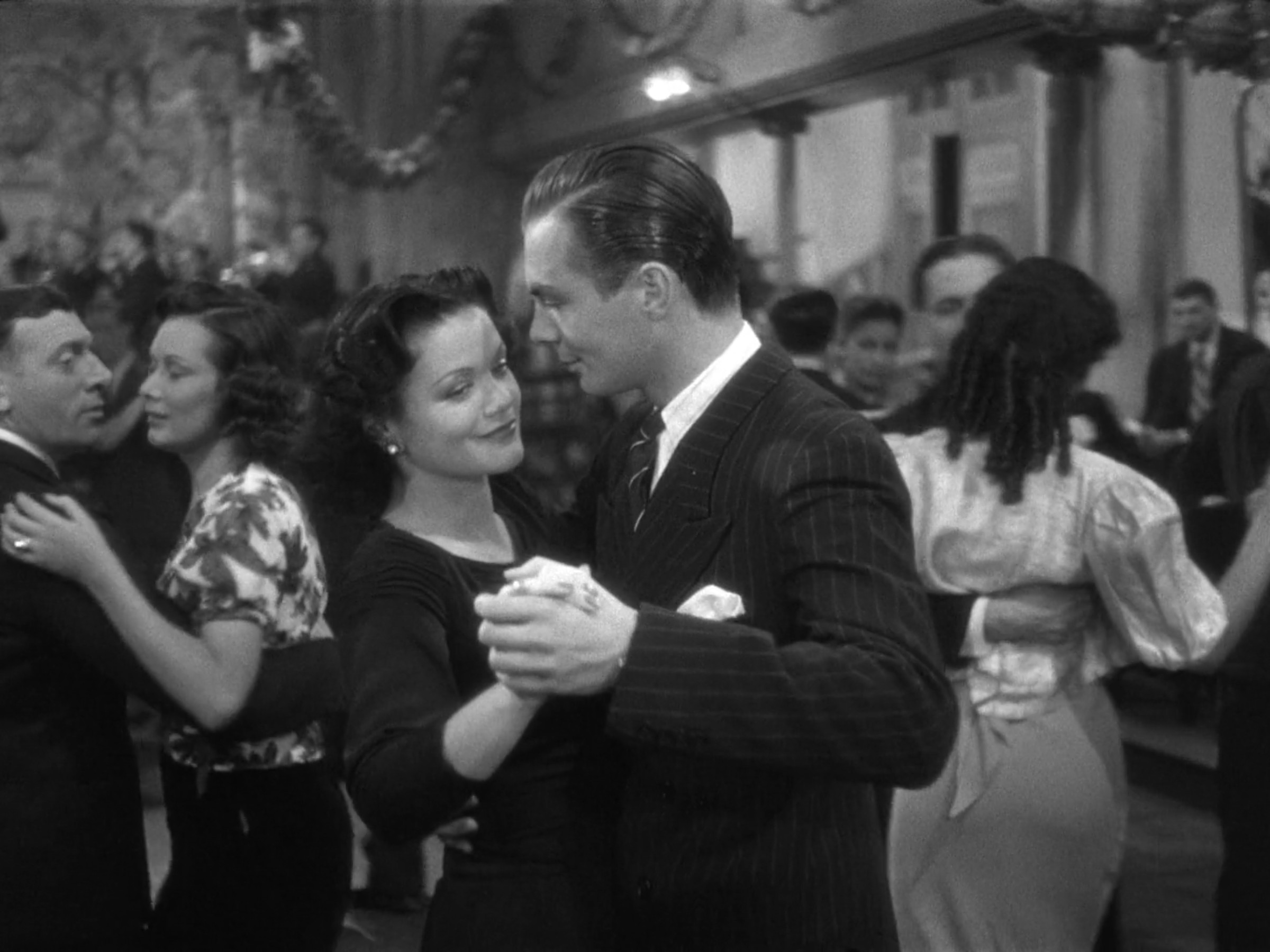
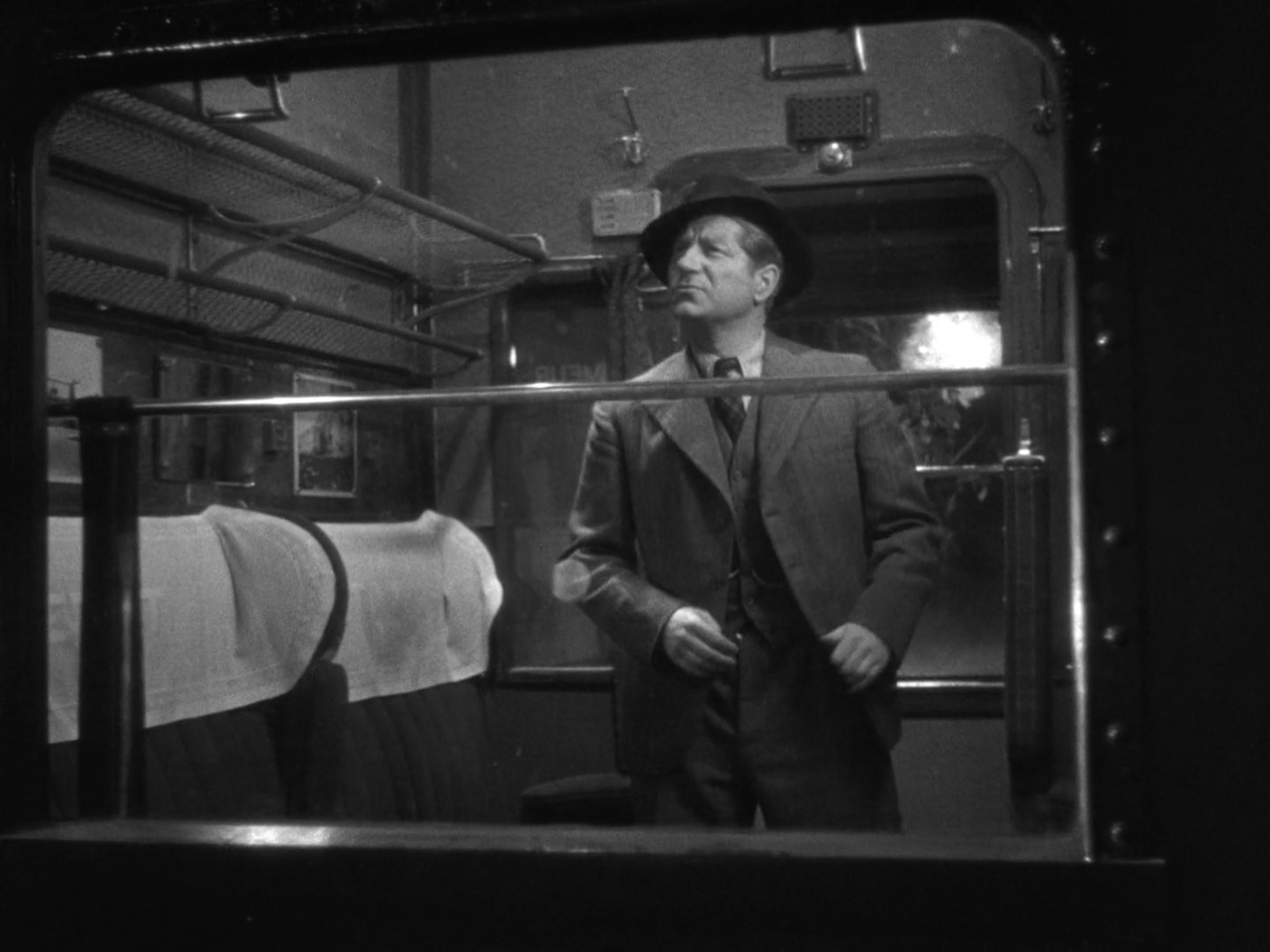
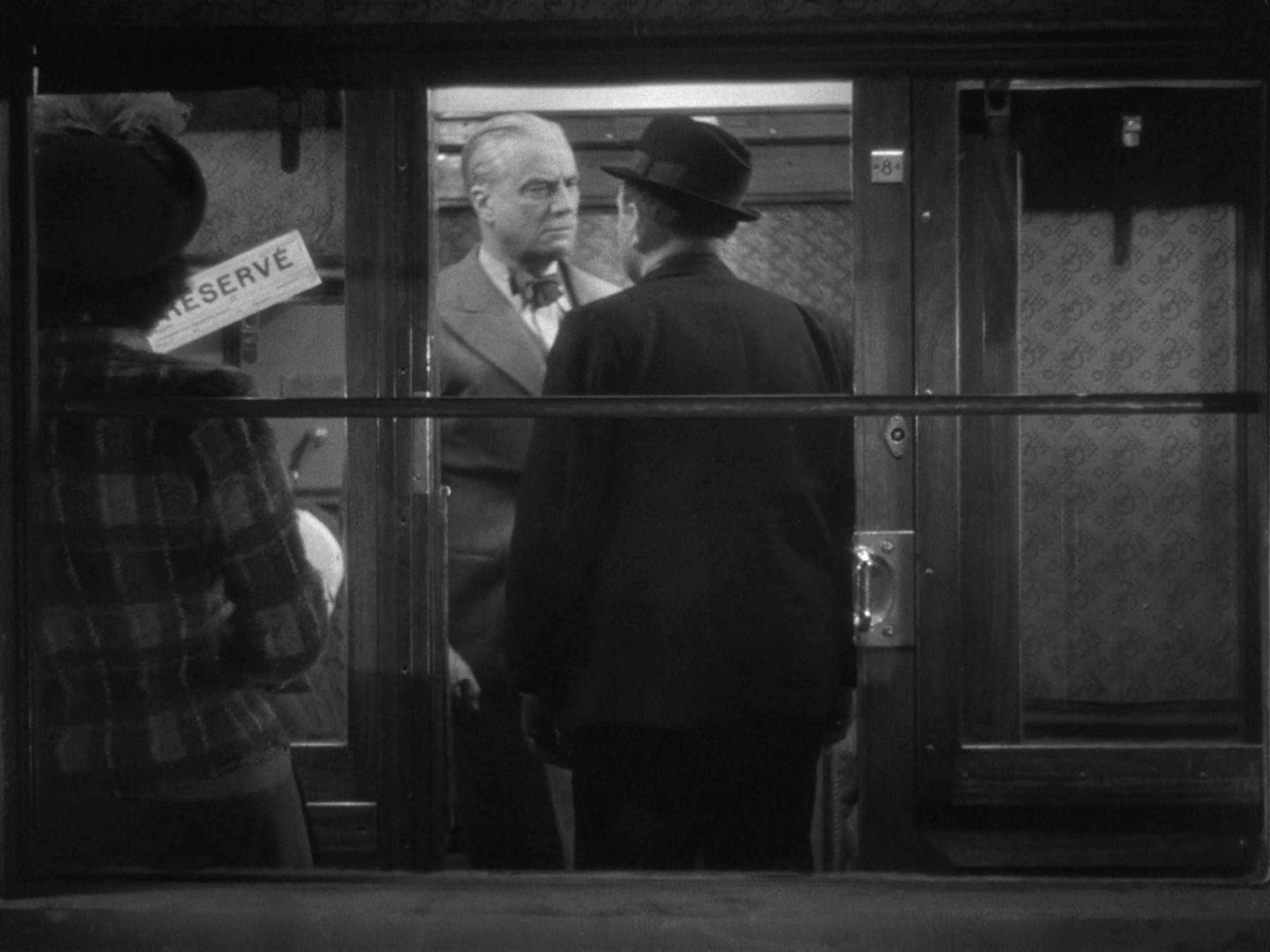
With an infatuated Lantier as the sole witness to this assassination, Séverine finds no difficulty in covering it up, and thus an affair begins to blossom between the two. Renoir’s camera seems to be in equal adoration of her as well, often framing her through windows and mirrors like the subject of a painter’s gaze, though he does not shy away from the darkness which encompasses both in sultry, gloomy reflections. While Jean Gabin is playing out internal battles of self-control and impulsive fury, Simone Simon delivers a similarly layered performance as Séverine, albeit one which conceals a sharp, manipulative mind beneath seductive pleas for Lantier’s masculine protection. When she eventually confesses her love to him one rainy night, the camera’s movement from their kiss to an overflowing, nearby barrel isn’t just a suggestive hint at the following consummation – it is an ominous symbol of mounting emotions ready to spill over at any moment.
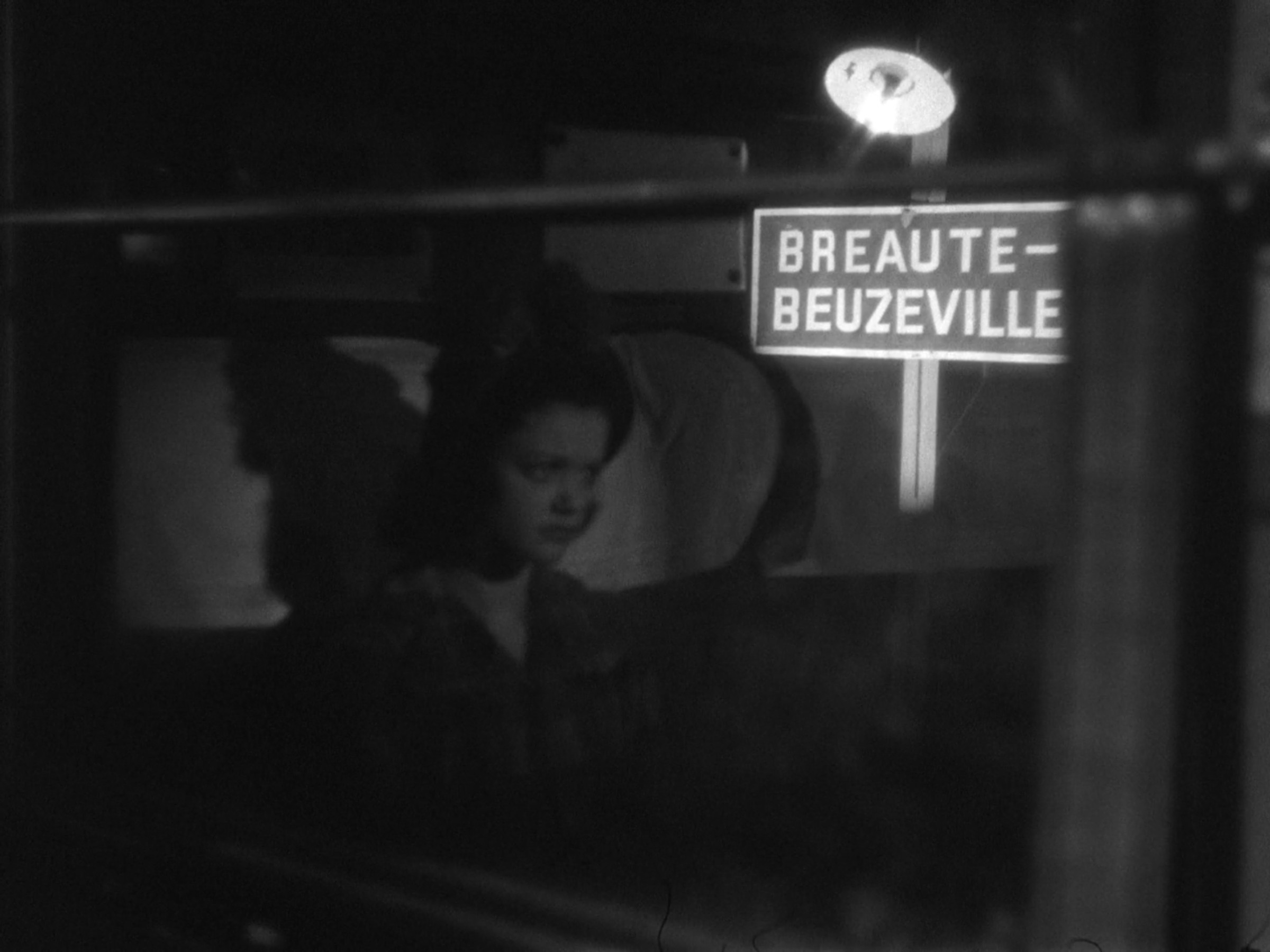
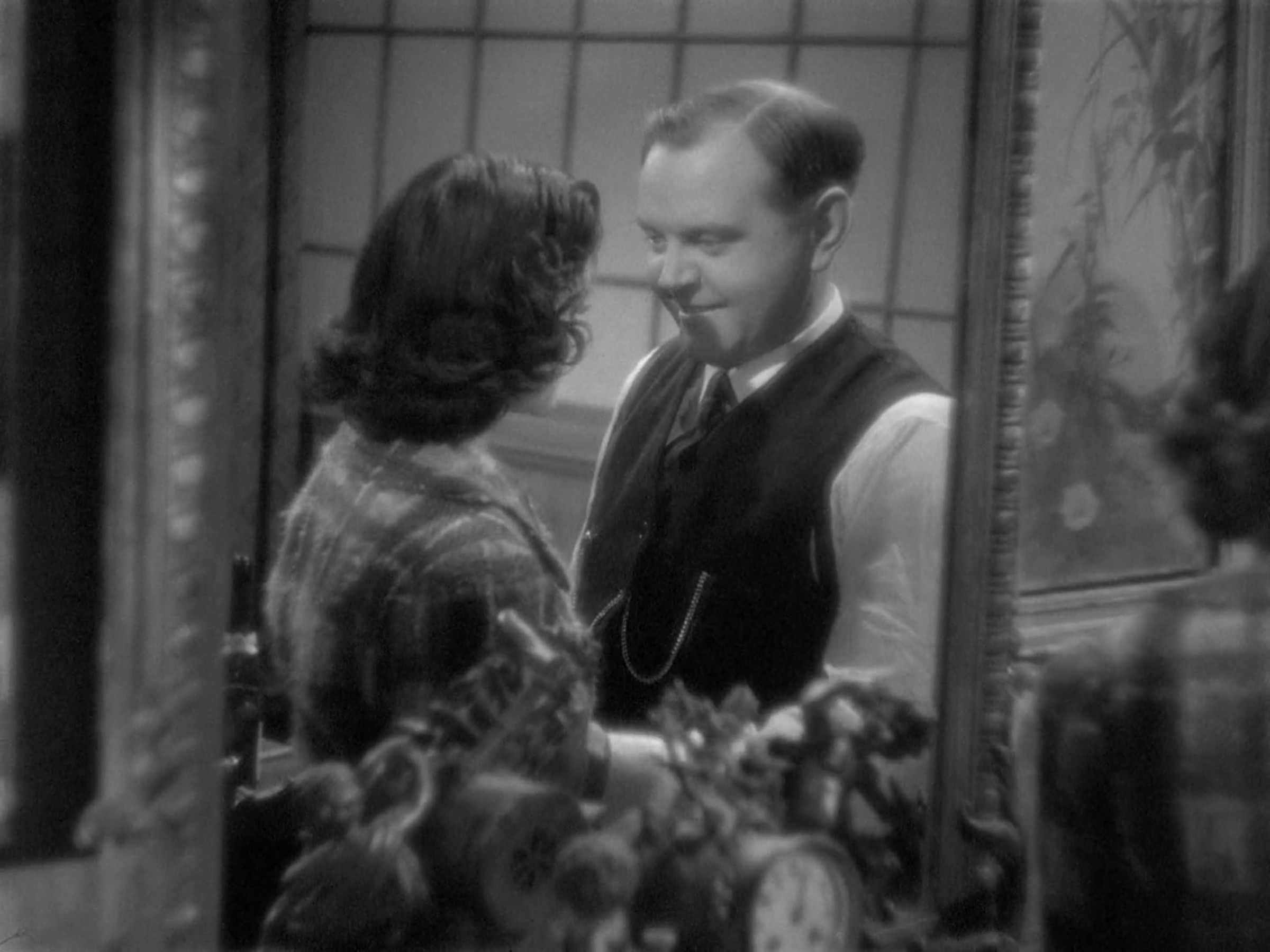
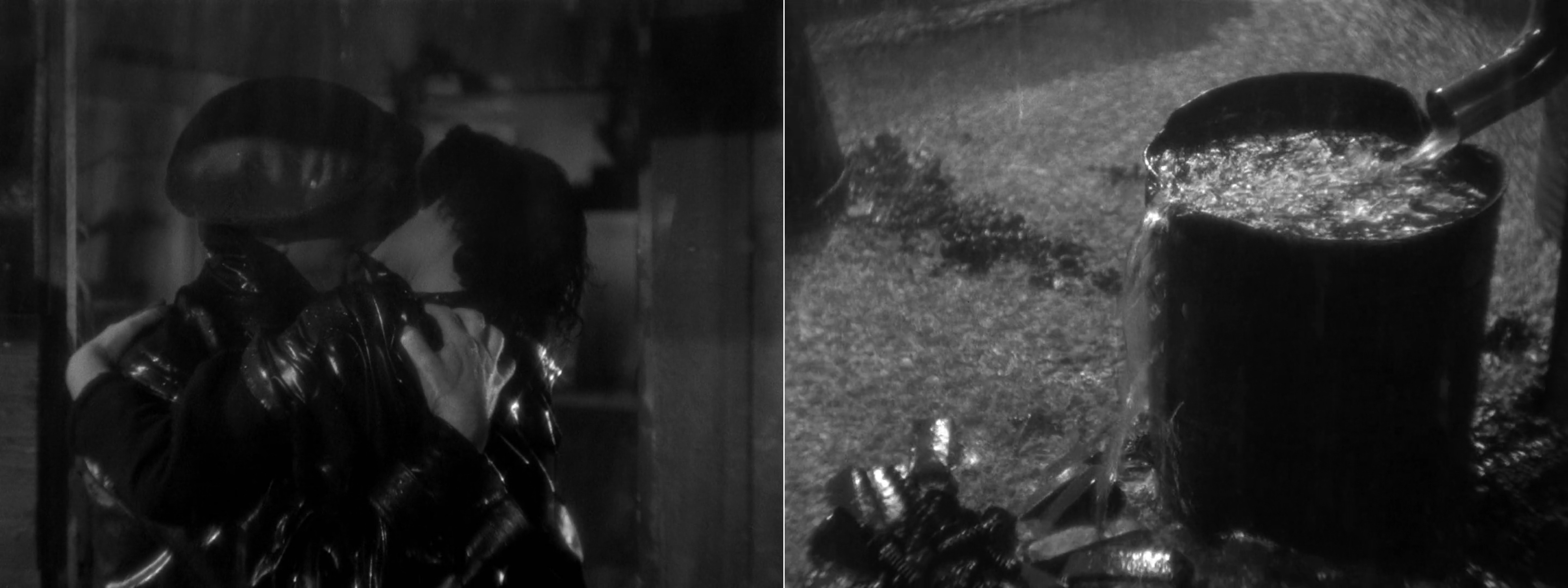
The first attempt on Roubaud’s life thus stands out as perhaps the most potent harbinger of film noir in La Bête Humaine, both in terms of narrative and mise-en-scène. With Séverine’s murder of Grandmorin becoming a point of morbid intrigue for Lantier, she takes him to a murky, industrial train yard where can find out for himself what it is like to kill a man, and Renoir’s lighting grows more expressionistic than ever. Long shadows are thrown across the rough ground, and a single strip of light illuminates Lantier’s guilty eyes, before he reaches down into a puddle and claims a steel pipe as his weapon. Even with Séverine’s encouragement though, still he cannot bring himself to unleash the murderous animal within him – at least, not upon the target she has aimed him towards.
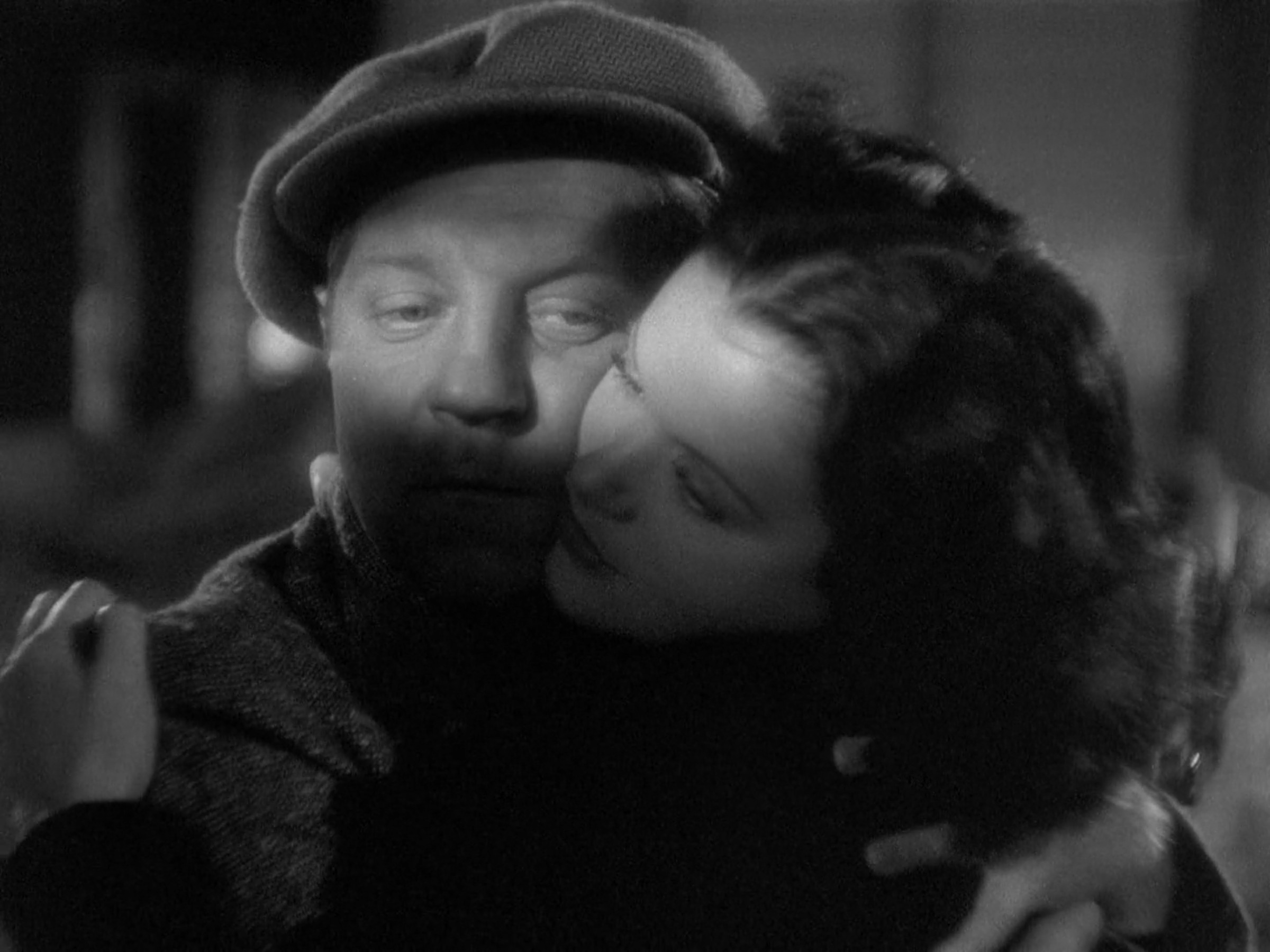
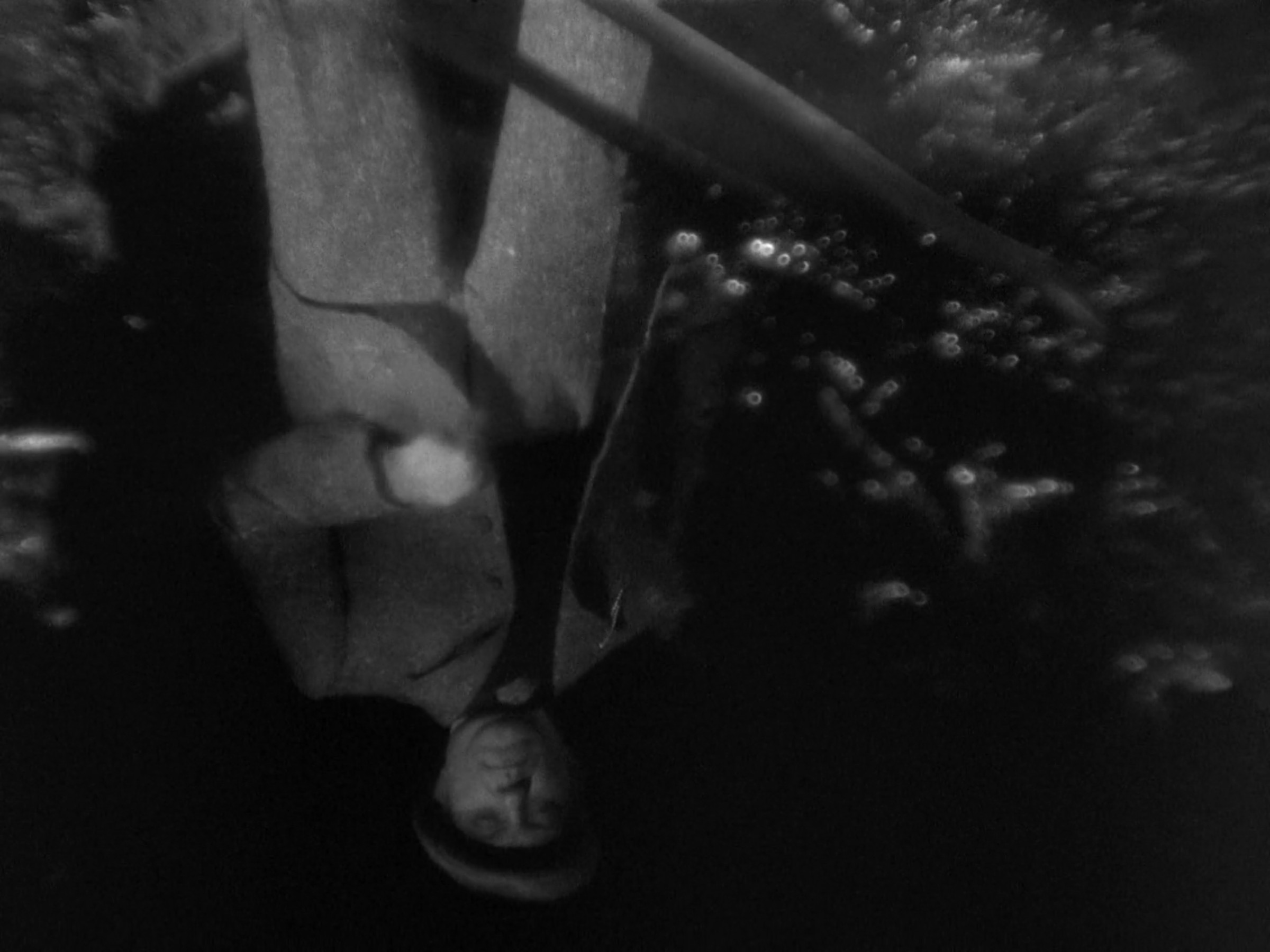
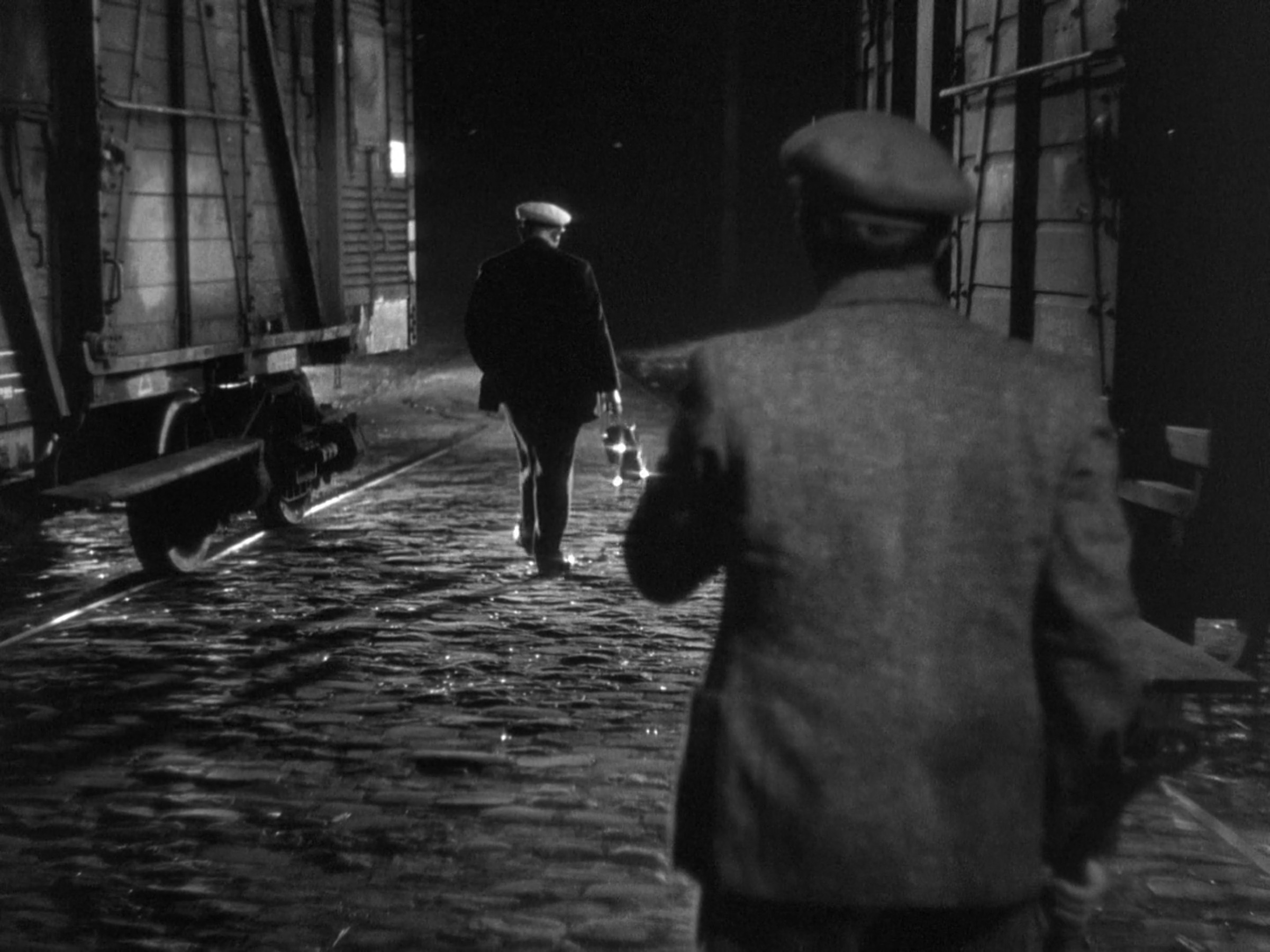
Like the steam trains he is so lovingly obsessed with, Lantier cannot deviate from the rigid tracks he has been set on, and it is no use trying to slow or control him. Renoir has been building this metaphor right from the start through montages of chugging wheels, burning furnaces, and our soot-covered protagonist at the helm, while those recurring shots fixed to the vehicle itself build a similarly brisk momentum, hurtling forward into pitch-black tunnels and beneath bridges. His fate is as tragically assured as the destination of any locomotive, finally toppling headfirst into madness when Séverine tries to seduce him one last time into killing her husband.
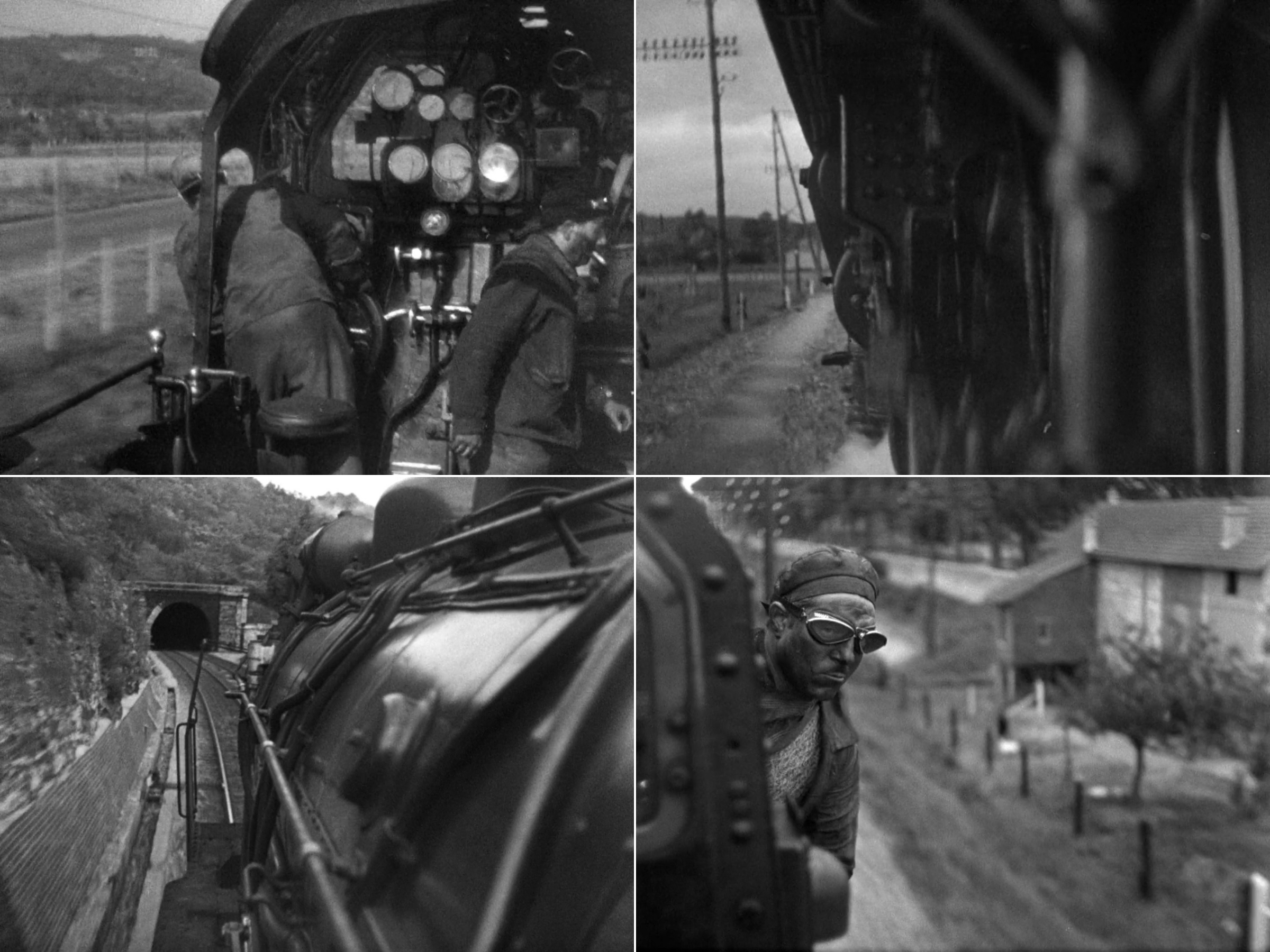
Much like the murder of Grandmorin, Renoir’s camera keeps a safe distance from the violence which unfolds, though this time we are given glimpses through a doorway as Lantier furiously chases his lover. With so much of this unfolding offscreen, we are given nothing but her chilling screams to fill in the dead air before he finally re-enters the frame, pushes her onto a bed, and sinks a knife into her flesh. In the aftermath, the sentimental lyrics of a French love song seem to taunt Lantier as his mind begins to clear, and the camera drifts mournfully across Séverine’s limp, lifeless body.
“Whoever tries to love Ninette,
Will end up with a broken heart,
Ninon’s little heart,
Is tiny and frail and adorable.”
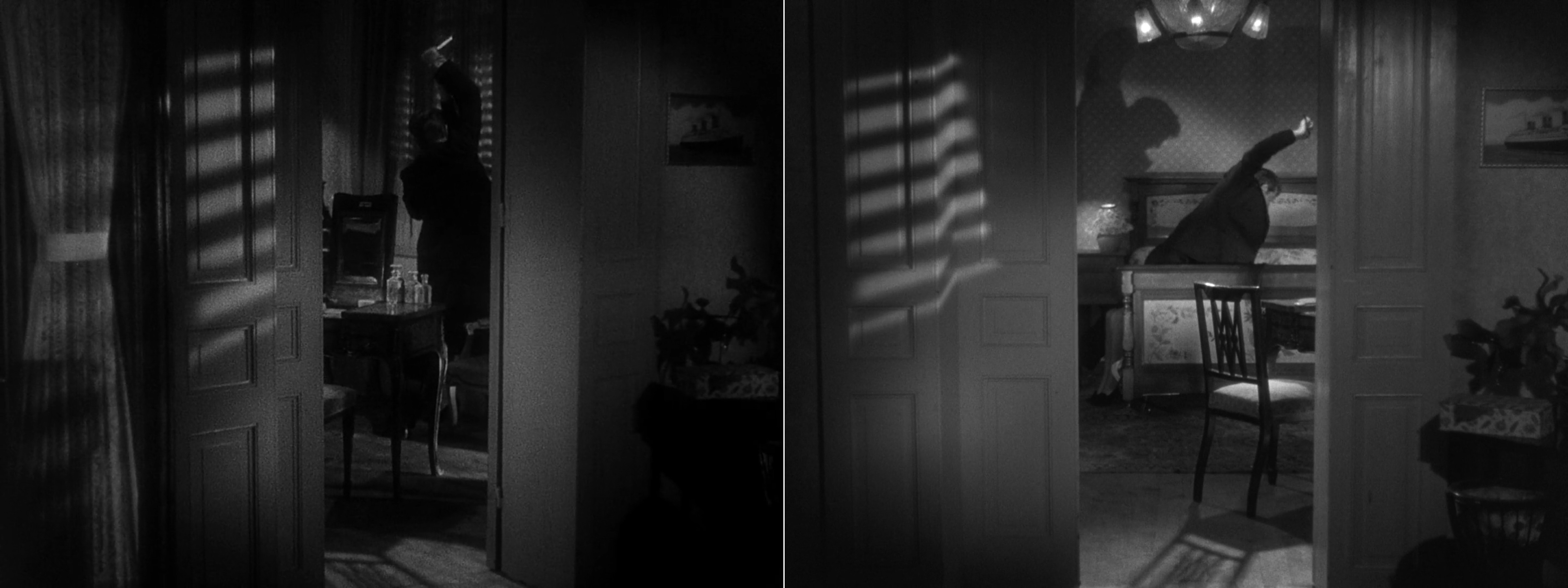
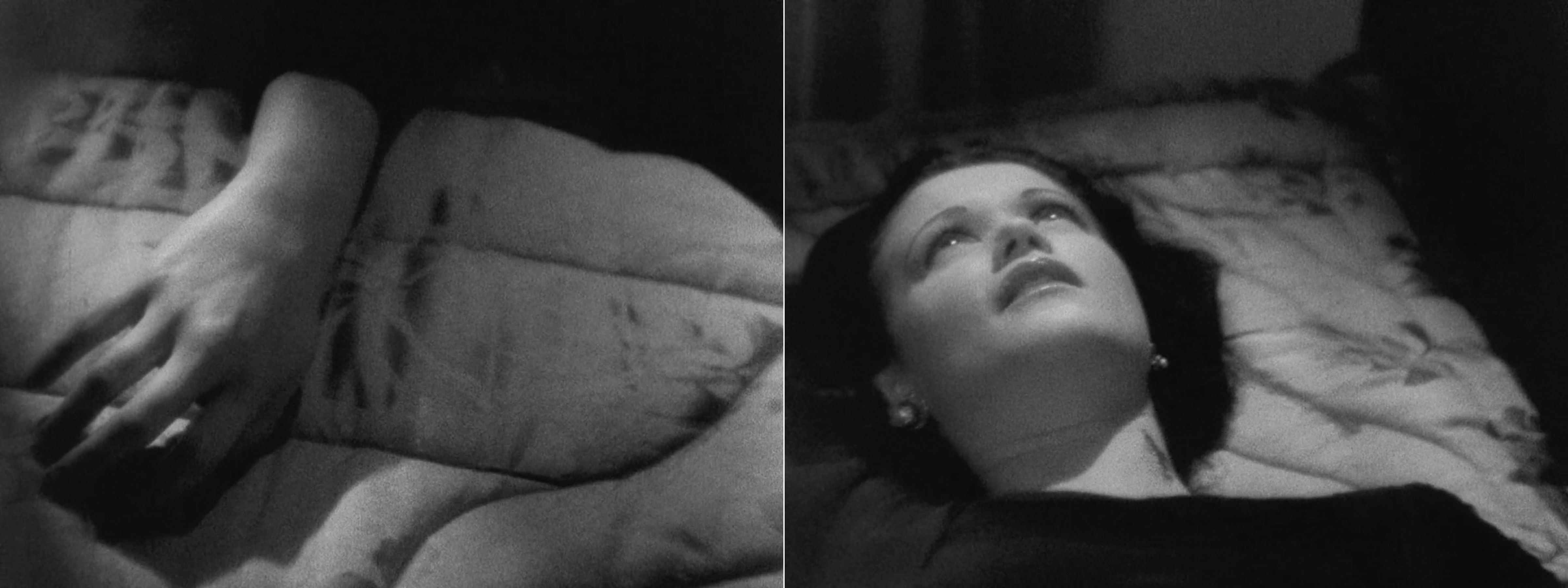
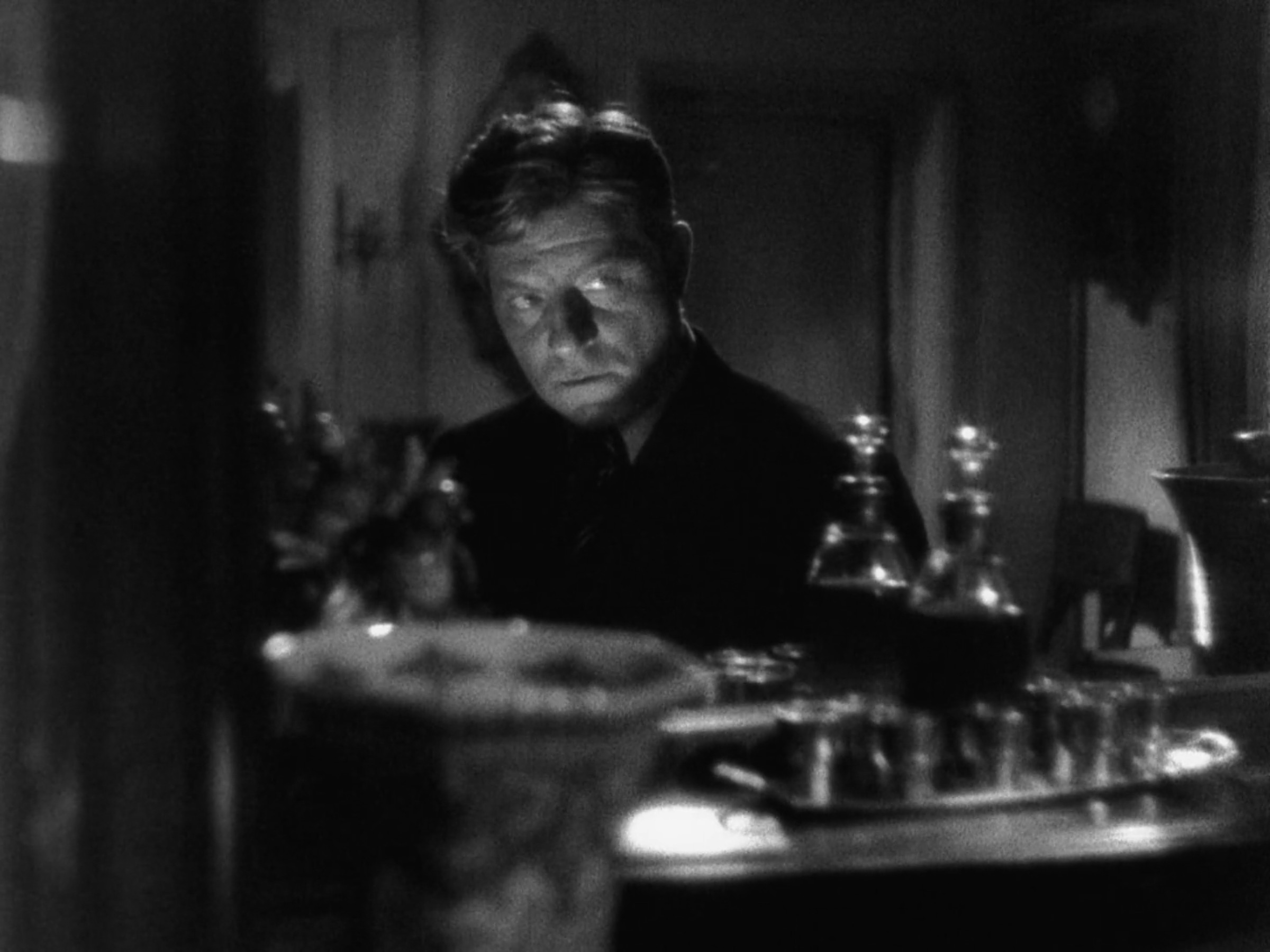
Still set on a singular, unwavering path, Lantier trudges down the railway tracks and towards his final shift at work. The beast within him has won, and now only death can end the suffering it has inflicted upon his mind and soul. After witnessing him jump from a moving train and finding his body in the grass, it seems that even his colleague Pecqeaux agrees too, poignantly remarking that “I haven’t seen him look so peaceful in a long time.” Perhaps this calmness found in the destruction of the self is the best that any of us can hope for, Renoir cynically laments – and yet La Bête Humaine never entirely discounts the grace which comes with such suffering. If anything, the fact that Lantier’s anguish resonates so loudly only affirms the existence of beauty in his troubled life, letting us cherish it even more for its delicate, fateful fragility.

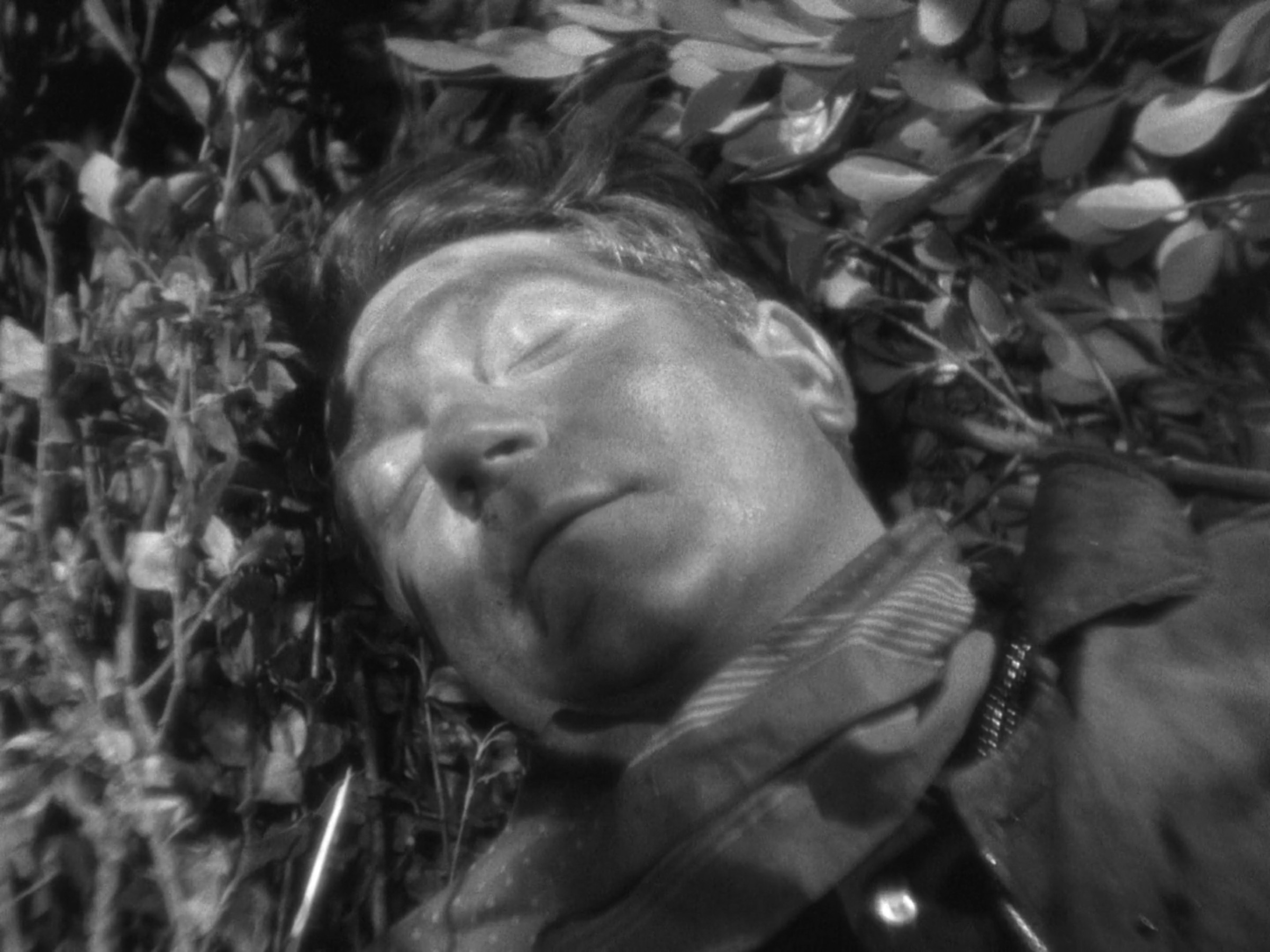
La Bête Humaine is currently streaming on The Criterion Channel.

